DashClicks Blog
The industry's top experts offer their best advice, research, how-tos, and insights—all in the name of helping you level-up your business and online marketing skills.
Join Us!

Ad Compliance Made Client-Friendly: Avoiding Account Bans with White Label Facebook Ads
Facebook advertising has become the backbone of modern digital marketing strategies. With over 2.9 billion monthly active users, the platform offers unparalleled reach for businesses looking to connect with their target audiences. However, this massive opportunity comes with significant challenges—particularly around ad compliance.
Recent data shows that Facebook disabled approximately 1.1 billion fake accounts in the first quarter of 2024 alone, highlighting the platform's increasingly strict enforcement policies. For marketing agencies managing multiple client accounts, staying compliant isn't just about following rules—it's about protecting their business and maintaining client relationships.
This is where white label Facebook ads services become invaluable. These specialized partners help agencies navigate complex compliance requirements while delivering exceptional results for their clients.
The Anatomy of a Facebook Ads Account Ban
Understanding the different types of Facebook account restrictions is crucial for any agency serious about maintaining long-term success on the platform.
Facebook enforces rules through a range of actions, each designed to address different levels of non-compliance. Understanding these can help advertisers minimize risk and maintain account health:
- Ad-Level Disapprovals: These occur when an individual ad fails to meet Facebook’s advertising policies. While the rejected ad cannot run, the advertiser’s overall account remains active. This is often the first warning sign that content may need adjustment.
- Account-Level Restrictions: If violations persist, Facebook may impose limitations on the account itself. This can include restrictions on certain ad types, reduced ad delivery, or temporary spending caps. Such measures are designed to prevent further breaches while still allowing some advertising activity.
- Temporary Suspensions: For repeated or more serious violations, accounts may be suspended for a specific period, ranging from 24 hours to several weeks. During this time, all ad activity is paused, and advertisers must often undergo a review process before regaining access.
- Permanent Account Bans: The most severe action is a permanent ban, which results in full removal from the platform. Once banned, the advertiser loses access to all campaigns, assets, and pages associated with the account, and there is typically no recourse to appeal.
Common Triggers for Account Bans
Understanding what commonly triggers bans can help advertisers stay compliant and avoid disruptions:
- Policy Violations: Content that violates Facebook’s advertising standards—such as misleading claims, prohibited products, or inappropriate imagery—is the most frequent cause of account issues. Even unintentional violations can escalate if repeated.
- Repeated Ad Disapprovals: Multiple ad rejections within a short period signal to Facebook that the account may not be adhering to its guidelines. Frequent disapprovals can lead to account-level restrictions or suspensions.
- Payment Issues: Problems with transactions, such as failed payments, disputed charges, or unusual spending patterns, often trigger additional scrutiny. Maintaining accurate billing information and monitoring transactions can prevent unnecessary restrictions.
- Suspicious Activity: Facebook monitors account behavior for signs of automation, sudden changes, or atypical login patterns. Rapid adjustments to campaigns, frequent password changes, or multiple logins from different locations can all raise red flags.
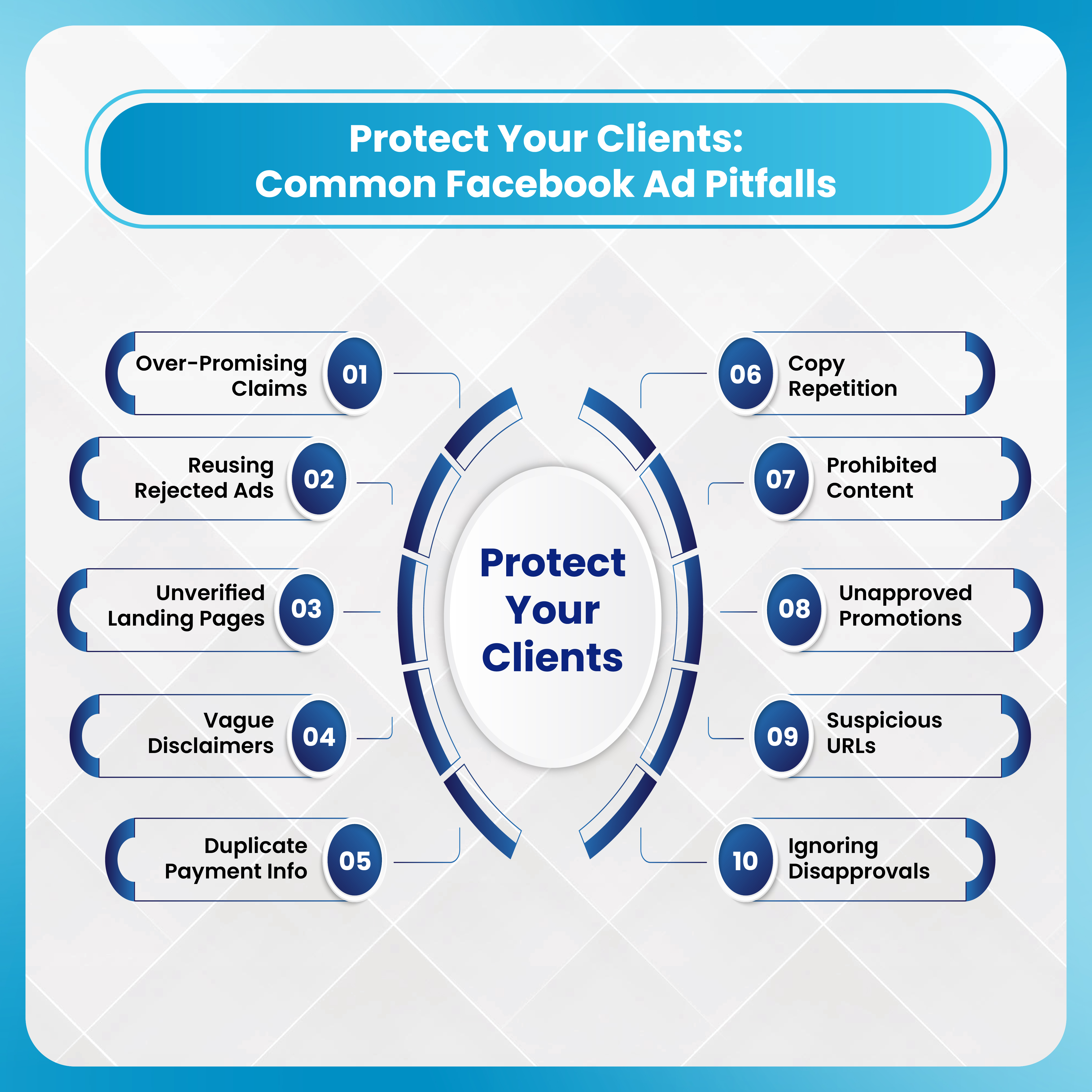
Industry research highlights that agencies managing multiple client accounts face a higher compliance risk. Specifically, agencies handling 10 or more accounts experience a 40% greater likelihood of encountering violations compared to single-account advertisers.
This statistic emphasizes the challenges of scaling campaigns responsibly and the importance of professional compliance management. Proper monitoring, regular audits, and staff training are crucial for reducing the risk of account disruptions. For network hygiene, ensuring teams use WPA3 on office and home Wi-Fi reduces credential-theft risk when accessing client ad accounts.
Understanding Facebook Ad Policies in Depth
Facebook's advertising policies are comprehensive and constantly evolving. What makes compliance particularly challenging is that policies aren't just black and white—many exist in gray areas that require experience and judgment to navigate effectively.
Core Policy Areas
The most commonly violated policy areas include:
- Prohibited Content: Misleading claims, adult content, or dangerous products.
- Restricted Industries: Healthcare, financial services, and political advertising.
- Targeting Restrictions: Age-sensitive content and discriminatory practices.
- Landing page compliance: Ensuring destination pages match ad content.
The Nuance Challenge
Many violations occur not from intentional rule-breaking but from misunderstanding policy nuances. For example, before-and-after images are generally prohibited, but there are specific exceptions for certain industries when proper disclaimers are used. Similarly, financial service ads require pre-approval in most regions, but the definition of "financial services" can be broader than many advertisers realize. Ads using client or influencer content can unintentionally breach copyright or misrepresentation rules.
Facebook's AI moderation system processes millions of ads daily, sometimes flagging content that technically complies with policies but triggers automated systems. This automation, while improving enforcement speed, can also misclassify content. Meta’s automated systems detected and disabled most inauthentic accounts and content, with human review applied in specific escalations.
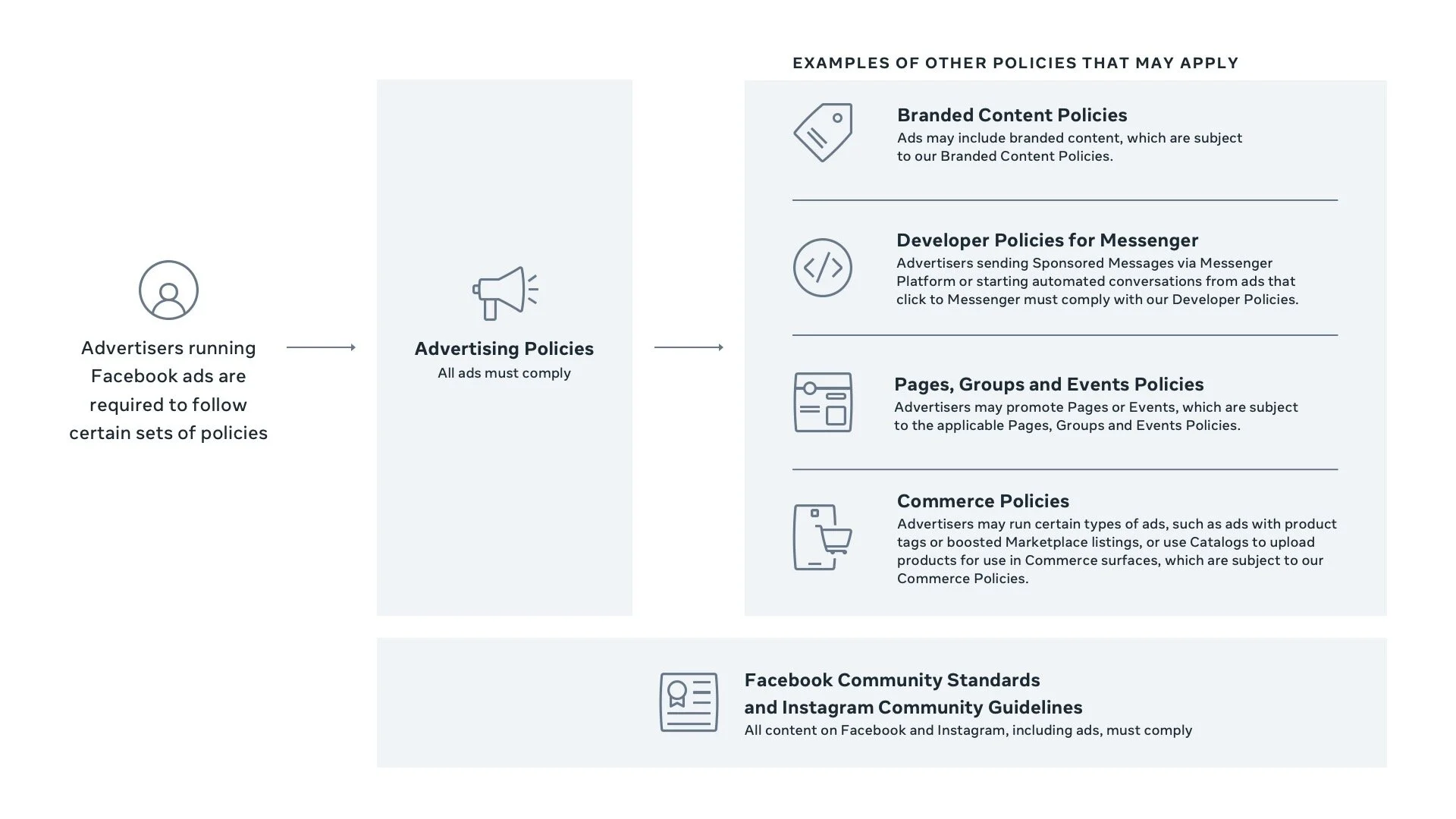
Image Source: Hue&Tone
Agencies that fail to anticipate automated pattern recognition — such as repetitive phrasing or CTA structures — risk unnecessary ad pauses. A structured compliance process helps prevent such algorithmic misclassifications.
Why Do Agencies Struggle to Maintain Compliance?
Even experienced marketing agencies face recurring compliance challenges as they scale. These issues stem from operational limits rather than negligence. Several factors contribute to these challenges:
- Policy Complexity: Meta’s Advertising Standards now span over 40 categories, many of which include dynamic region-specific rules. Agencies managing cross-border or multilingual campaigns often face inconsistencies between markets.
- Scaling Volume: As campaign volume increases, manual compliance checks become unsustainable. Agencies running dozens of clients must review hundreds of ad sets weekly — a scale that introduces human error.
- Fragmented Oversight: Agencies often delegate campaign management to freelancers or junior media buyers without centralized compliance governance. A single misstep across accounts can trigger cascading bans affecting shared business managers.
- AI vs. Human Misinterpretation: Meta’s automated systems sometimes misinterpret creative intent. Agencies lacking escalation procedures may struggle to recover quickly, leading to lost revenue during appeals.
A significant number of agencies have reported experiencing temporary restrictions on their Facebook Ads accounts, underscoring the importance of proactive compliance measures.
These structural challenges highlight why even well-trained teams benefit from specialized compliance frameworks — something white-label providers are built to deliver.
Here is an example: A mid-sized digital marketing agency recently experienced this challenge firsthand. They successfully managed Facebook ads for five local businesses without any compliance issues. However, when they expanded to 25 clients across various industries, they encountered their first account ban within three months. The violation? A seemingly innocent weight-loss supplement ad that violated Facebook's health claims policy—a nuance they hadn't encountered with their previous retail and restaurant clients.
How White Label Facebook Ads Services Prevent Account Bans?
Professional white label Facebook advertising providers bring specialized expertise and systematic processes that significantly reduce compliance risks. Here's how they achieve this:
1. Dedicated Compliance Teams: The best white label Facebook ads providers maintain dedicated compliance teams that stay current with policy changes and platform updates. These specialists review every campaign before launch, identifying potential issues that general marketing professionals might miss.
2. Automated Pre-Launch Checks: Advanced providers use proprietary tools to scan ad creative, copy, and targeting parameters against current Facebook policies. These automated systems catch common violations before ads go live, preventing account strikes.
3. Continuous Monitoring: Compliance doesn't end at launch. Professional providers monitor running campaigns for policy changes that might affect existing ads. When Facebook updates its policies, it proactively reviews and adjusts campaigns to maintain compliance.
4. Structured Review Processes: Facebook ads services providers implement multi-step review processes that include:
- Initial creative and copy review.
- Targeting parameter validation.
- Landing page compliance verification.
- Final pre-launch approval.
This systematic approach ensures nothing falls through the cracks.
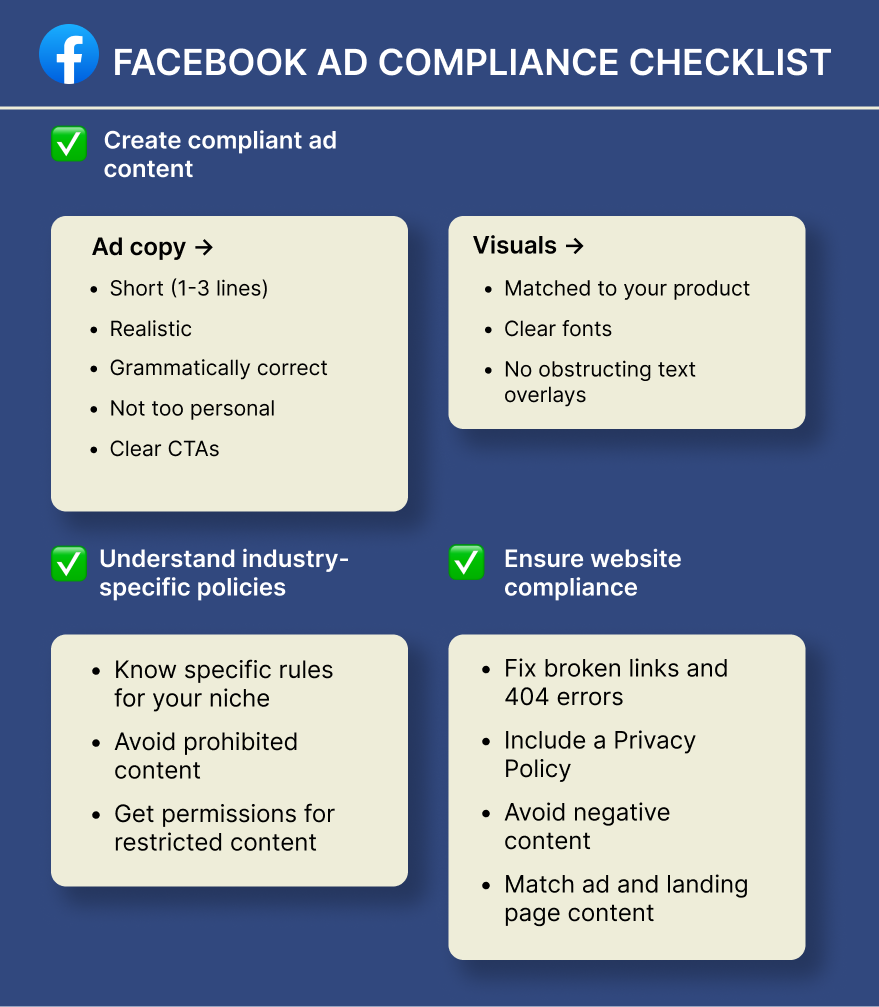
Image Source: LeadEnforce
Agencies that outsource 40–60% of their service delivery grow about 2.3 times faster than their peers and enjoy profit margins that are 18–22% higher.
Advanced Tactics Used by White Label Facebook Ads Partner
Experienced white label Facebook Ad providers employ sophisticated strategies that go beyond basic compliance checking:
- Campaign Segmentation for Risk Management: Smart providers segment campaigns based on risk levels. High-risk industries or new ad formats receive additional scrutiny and may be launched in smaller test phases to minimize potential account impact.
- Creative Auditing Systems: Professional providers maintain extensive databases of approved and rejected creative elements. This knowledge base helps them craft compliant ads while avoiding common pitfalls that trigger Facebook's automated systems.
- Payment and Billing Safeguards: Account bans often result from payment issues rather than policy violations. White label Facebook ads providers implement robust billing systems that prevent failed payments and maintain clean account standing.
- Multi-Account Management Strategies: For larger clients, experienced providers may recommend distributing campaigns across multiple ad accounts. This strategy protects the primary business account from potential violations in testing or experimental campaigns.
These practices not only reduce risk but also help agencies scale safely across dozens of accounts without jeopardizing client results.
For example, a white label Facebook ads provider might create separate ad accounts for a client's brand awareness campaigns and their direct-response promotions. If the direct-response account encounters issues, the brand campaigns continue running without interruption.
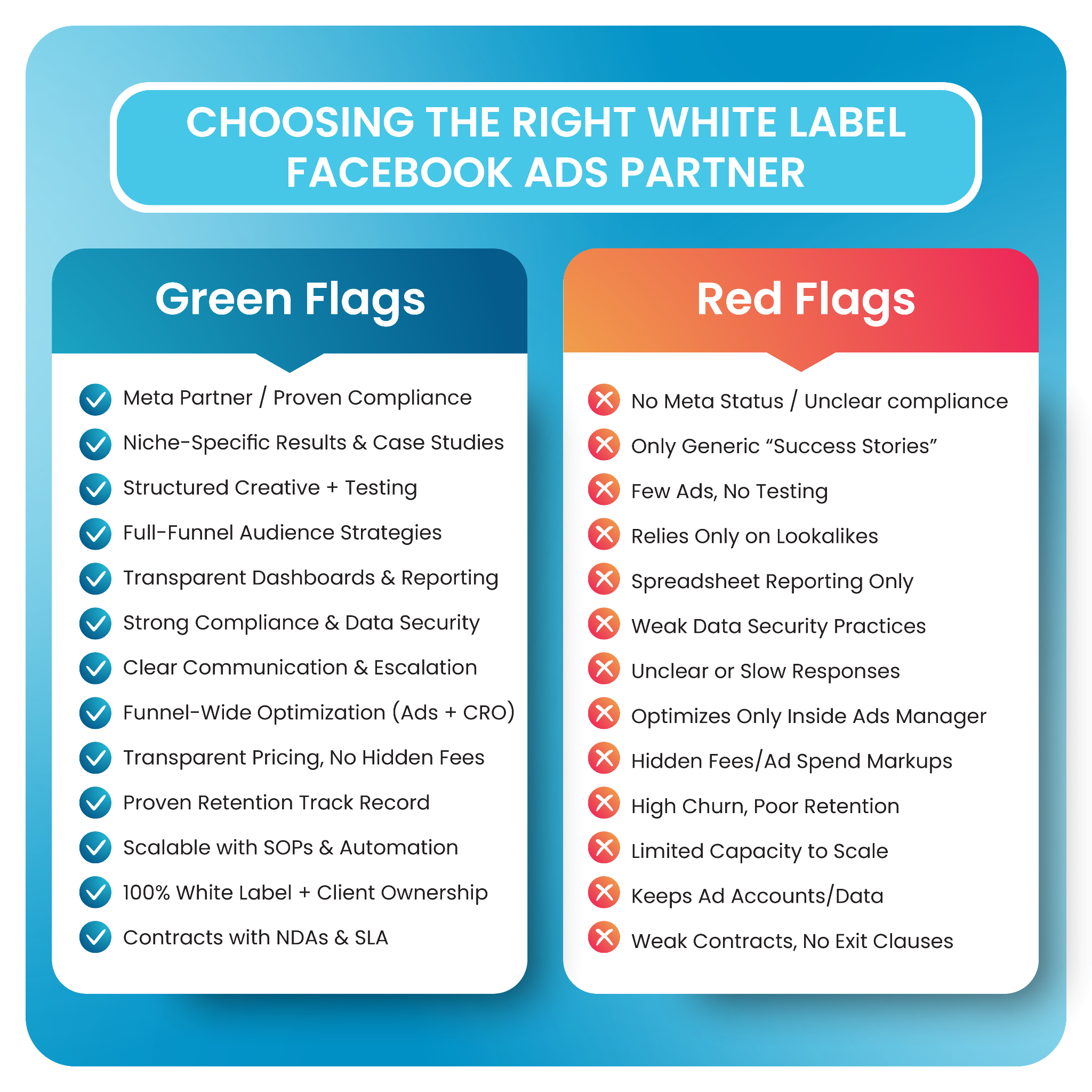
Measuring Compliance Success
Effective compliance management requires ongoing measurement and optimization. Key metrics include:
1. Account Health Indicators
- Disapproval Rate: Percentage of ads rejected on first submission.
- Policy Violation Frequency: Number of strikes per quarter.
- Account Restriction Incidents: Temporary or permanent limitations.
- Appeal Success Rate: Percentage of successful violation appeals.
2. Performance Impact Metrics
- Campaign Uptime: Percentage of time campaigns run without interruption.
- ROAS Stability: Consistency of return on ad spend over time.
- Client Retention: Impact of compliance issues on client relationships.
Agencies leveraging white label partnerships experience significant improvements in operational efficiency and client satisfaction.
3. Reporting and Transparency
Professional providers offer detailed compliance reporting that includes:
- Weekly policy update summaries.
- Campaign-specific compliance scores.
- Risk assessment reports.
- Violation prevention recommendations.
- Visual Compliance Dashboards.
This transparency helps agencies understand the value they're receiving and make informed decisions about their advertising strategies.
How DashClicks Ensures Ad Compliance Success?
DashClicks takes a comprehensive approach to Facebook ad compliance that protects both agencies and their clients. Their white label Facebook ads service incorporates multiple layers of protection to ensure campaigns stay compliant while delivering strong results.
Their compliance system begins with their dedicated team of Facebook advertising specialists who stay current with all platform policy updates. Before any campaign launches, their experts conduct thorough reviews of ad creative, targeting parameters, and landing pages to identify potential compliance issues. This proactive approach prevents violations before they occur, protecting client accounts from strikes or suspensions.
What sets DashClicks apart is its systematic approach to risk management. They maintain detailed compliance checklists for different industries and ad types, ensuring that every campaign receives appropriate scrutiny based on its risk level. Their team also implements ongoing monitoring systems that track campaign performance and policy changes, making adjustments when necessary to maintain compliance throughout the campaign lifecycle.
Agency Takeaways and Action Steps
Compliance management is now a core pillar of scalable Facebook advertising operations. Agencies that rely solely on manual processes or freelancers often discover compliance issues reactively — when campaigns are already halted.
Strategic Takeaways for Agencies:
- Institutionalize Compliance: Treat Facebook’s ad policies as an operational framework, not optional guidelines.
- Prioritize Preventive Audits: Pre-launch creative and targeting reviews reduce rejection risk by up to 70%.
- Leverage White Label Expertise: Facebook Ads services provide compliance systems that agencies can brand as their own.
- Educate Clients: Proactive client education minimizes pushback on ad restrictions and fosters transparency.
- Build Redundancy: Maintain secondary accounts or partners to ensure campaign continuity in case of unexpected restrictions.
Long-Term Benefits:
- Reduced Account Downtime: More consistent campaign delivery cycles.
- Higher Client Retention: Stable results build confidence and reduce churn.
- Operational Scalability: Agencies can manage multiple clients with fewer disruptions.
As Meta continues tightening its policy enforcement systems, agencies must evolve from reactive problem-solving to proactive compliance leadership. Partnering with white label Facebook Ads providers transforms compliance from a liability into a competitive advantage.
Conclusion
Ad compliance is no longer a back-office concern — it’s a strategic differentiator for growth-oriented digital marketing agencies. In an environment where even small oversights can trigger costly account bans, agencies that rely solely on freelancers or fragmented in-house processes face growing operational risk.
Facebook Ads services bridge this gap by providing structured, policy-aligned, and continuously monitored campaign management. With dedicated compliance oversight, automated pre-checks, and scalable risk mitigation workflows, agencies can focus on strategy, creative innovation, and client acquisition — confident that their campaigns meet Meta’s evolving standards.
In the coming years, the best-performing agencies will not just excel at media buying — they will master sustainable compliance at scale. White label partners provide that foundation, transforming Facebook Ads management from a reactive challenge into a predictable, client-friendly growth engine.


How White Label SEO Empowers Agencies to Serve International Clients
For digital marketing agencies, growth often means looking beyond domestic borders. Attracting international clients is a hallmark of success, indicating that an agency possesses the capabilities and reputation necessary to compete on a global scale. However, this ambition comes with significant hurdles. Serving clients in different countries requires more than just a talented team; it demands deep, specialized knowledge of diverse markets, cultures, and search engine behaviors.
Many agencies quickly discover that the strategies that deliver results at home don't translate directly to international markets. From language barriers and cultural nuances to navigating unfamiliar search engines and complex regulations, the challenges are substantial. Without the right resources, agencies risk underdelivering, damaging their reputation, and losing valuable clients.
This is where white label SEO emerges as a powerful solution. By partnering with a specialized white label SEO agency, marketing firms can instantly access the expertise needed to deliver exceptional results for their international clients.
This model enables agency operations, offers a broader range of services, and confidently enters the global stage without the immense overhead of building an in-house international team. This guide explores how leveraging white label SEO services can empower your agency to overcome common obstacles and thrive in the global marketplace.
Why Your Agency Needs International SEO Clients?
Expanding your client base to include international businesses is not just about prestige; it's a strategic move that can fundamentally transform your agency's trajectory. Global clients bring a host of benefits that contribute to long-term stability and growth. According to recent industry reports, the global digital advertising and marketing market is projected to reach over $1 trillion by 2027, highlighting the immense opportunity available outside your local market.
Here are some of the key advantages of targeting international SEO clients:
- Significant Revenue Upside: International clients, particularly enterprise-level companies, often command larger marketing budgets. Their campaigns typically span multiple countries, leading to more comprehensive and lucrative projects. This allows your agency to secure higher-value contracts and increase your average revenue per client.
- Enhanced Client Retention and Recurring Revenue: International SEO is not a one-time project. It requires continuous monitoring, optimization, and adaptation to local market trends. This ongoing need for expertise creates long-term retainers, providing your agency with a stable and predictable stream of recurring revenue. High client retention rates are crucial for sustainable growth, and international clients often become your most loyal partners.
- Strategic Market Diversification: Relying solely on a domestic market exposes your agency to local economic downturns and market saturation. By diversifying your client base across different countries, you can mitigate these risks. A global portfolio ensures that a slump in one region is balanced by growth in another, creating a more resilient business model.
- Boosted Agency Reputation: Successfully delivering SEO results in multiple international markets positions your agency as a premium, globally-recognized provider. This enhanced reputation attracts more high-caliber clients, both domestic and international, and can make your agency a go-to choice for complex, multi-regional campaigns.
- First-Mover Advantage in Emerging Markets: Digital adoption is accelerating in emerging economies across Asia, Africa, and Latin America. By establishing a presence in these markets early, your agency can gain a significant first-mover advantage. Capturing market share before your competitors arrive can lead to long-term dominance and exponential growth opportunities. For instance, internet penetration in Southeast Asia has surpassed 80%, creating a massive new audience for businesses to target.

The Core Challenges of Serving International Clients
While the benefits are clear, the path to successfully serving international clients is filled with unique and complex challenges. Agencies that attempt to expand without the right expertise often find themselves unprepared for the intricacies of global SEO. These hurdles go far beyond simple language translation and require a deep understanding of local contexts.
Here are the primary obstacles agencies face when managing international SEO campaigns:
1. Language and Cultural Nuances
Effective SEO is about understanding user intent, which is deeply rooted in language and culture. A direct translation of keywords and content is rarely effective.
- Beyond Translation: Idiomatic expressions, semantic variations, and local slang play a crucial role in how users search. For example, a user in the UK searching for "holiday deals" has a different intent than a user in the US searching for the same term. One is looking for a vacation package, while the other might be looking for discounts around a public holiday.
- Cultural Context: Content must be culturally relevant to resonate with the target audience. A marketing message that is persuasive in one culture might be ineffective or even offensive in another. Visuals, tone of voice, and even the structure of content need to be adapted to local preferences.
2. Search Engine Differences and Algorithms
While Google dominates the search market in many parts of the world, it is not the only player. Key regional markets have their own preferred search engines with unique algorithms and ranking factors.
- Google vs. The World: In China, Baidu is the undisputed leader with over 70% of the market share. In Russia, Yandex is the dominant search engine. In South Korea, Naver holds a significant position. Each of these platforms has its own set of rules for indexing, ranking, and advertising.
- Lacking Local Expertise: Most agencies specialize in Google SEO and lack the in-house expertise to optimize for Baidu, Yandex, or Naver. Without this knowledge, they are unable to deliver meaningful results for clients targeting these regions.
3. Regional User Behavior and Preferences
How users interact with websites and consume content can vary dramatically from one country to another.
- Device Usage: Mobile-first indexing is a global trend, but the degree of mobile dominance varies. In many emerging markets, mobile is not just first; it's often the only way users access the internet. This requires a mobile-centric approach to web design and content delivery.
- Content and UX Expectations: User experience (UX) preferences are also culturally influenced. Some cultures prefer minimalist designs with plenty of white space, while others respond better to information-dense layouts. The path to conversion, including preferred payment methods and trust signals, also differs across regions.
4. Technical SEO Barriers
International SEO introduces a layer of technical complexity that many agencies are not equipped to handle.
- Hreflang and Canonicalization: Properly implementing hreflang tags is critical for telling search engines which version of a page to show to users in different regions. Errors in hreflang or canonical URLs can lead to duplicate content issues and incorrect page rankings.
- Global Site Infrastructure: Ensuring fast load times for a global audience requires strategic decisions about server locations and Content Delivery Networks (CDNs). A website that loads quickly in North America may be painfully slow for users in Australia or Japan without the right infrastructure.
5. Regulatory and Compliance Issues
Data privacy and consumer protection laws are becoming increasingly stringent worldwide, and non-compliance can result in hefty fines.
Navigating Global Regulations: The General Data Protection Regulation (GDPR) in Europe and the California Consumer Privacy Act (CCPA) are just two examples of complex data regulations that impact SEO strategies. Agencies must be knowledgeable about the specific laws in each country their clients operate in, which is a daunting task for non-specialists.
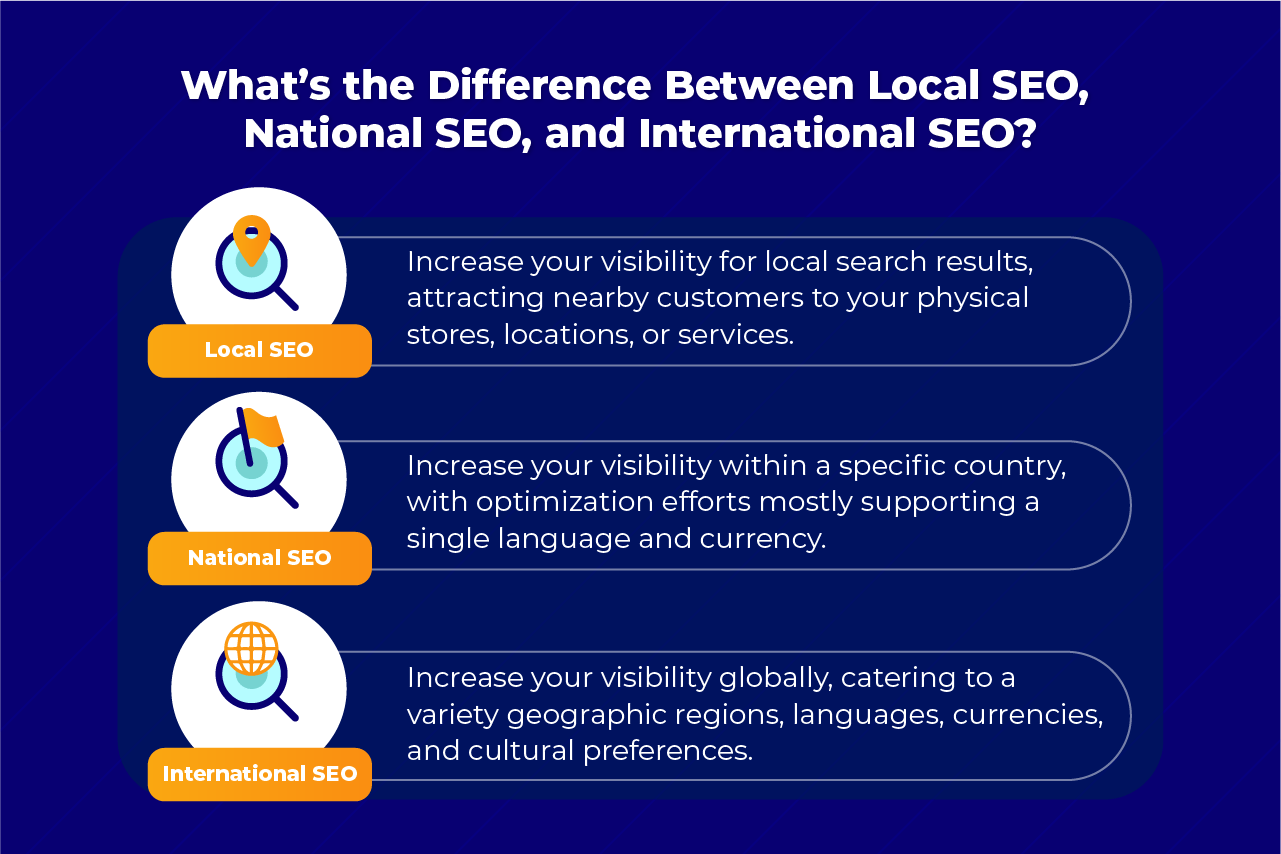
Image Source: Break The Web
The White Label SEO Solution: Overcoming Global SEO Hurdles
Partnering with a white label SEO agency provides a direct and efficient solution to these challenges. Instead of spending years and vast resources building an in-house international team, you can instantly leverage the expertise of specialists who already have the knowledge and tools to succeed globally. Here’s how white label SEO services empower your agency:
1. Multilingual Keyword Research and Intent Analysis
A white label SEO partner has teams of native-speaking SEO specialists who understand the subtle nuances of their local markets.
- They conduct precise keyword research that goes beyond literal translations, identifying high-intent keywords that local customers actually use.
- Using advanced tools and AI-assisted predictive research, they can also identify emerging trends and search behaviors in developing markets, giving your clients a competitive edge.
2. Localized Content Development
Effective international SEO requires content that is not just translated but truly localized.
- White label SEO providers create culturally relevant content that aligns with local search intent and resonates with the target audience.
- This includes adapting the tone, style, visuals, and even the format of the content to match local preferences. For example, while blog posts may be popular in one region, another may prefer video content or infographics.
3. Search Engine-Specific Optimization
A specialized white label SEO agency has dedicated teams for major international search engines.
- They provide tailored optimization for Baidu, Yandex, and Naver, understanding their unique ranking factors and submission processes.
- This includes implementing region-specific meta tags, structured data, and indexing practices to ensure maximum visibility on the platforms that matter most to your clients.
4. Expert Technical SEO and Infrastructure Management
White label SEO partners handle the complex technical aspects of international SEO, ensuring a solid foundation for your clients' global presence.
- They correctly implement hreflang tags, canonicalization, and multi-language sitemaps to avoid common pitfalls that can harm rankings.
- They also advise on and implement strategies for global site speed, such as choosing the right server locations and configuring CDNs for optimal performance in every target region.
5. Transparent, White-Labeled Client Reporting
Presenting results in a way that clients can understand and trust is crucial.
- White label SEO services provide fully customizable, white-labeled dashboards that highlight region-specific performance.
- Metrics are tailored to what matters most in each market, and reports can be presented in the client's native language, reinforcing your agency's professionalism and transparency.
6. Efficient Management of Multi-Country Campaigns
Running simultaneous campaigns across different markets can quickly overload an in-house team.
- White label SEO partners have established Standard Operating Procedures (SOPs) and automated workflows to manage complex, multi-country campaigns with efficiency and consistency.
- This allows your agency to scale its international offerings without having to scale its internal headcount, leading to greater profitability.
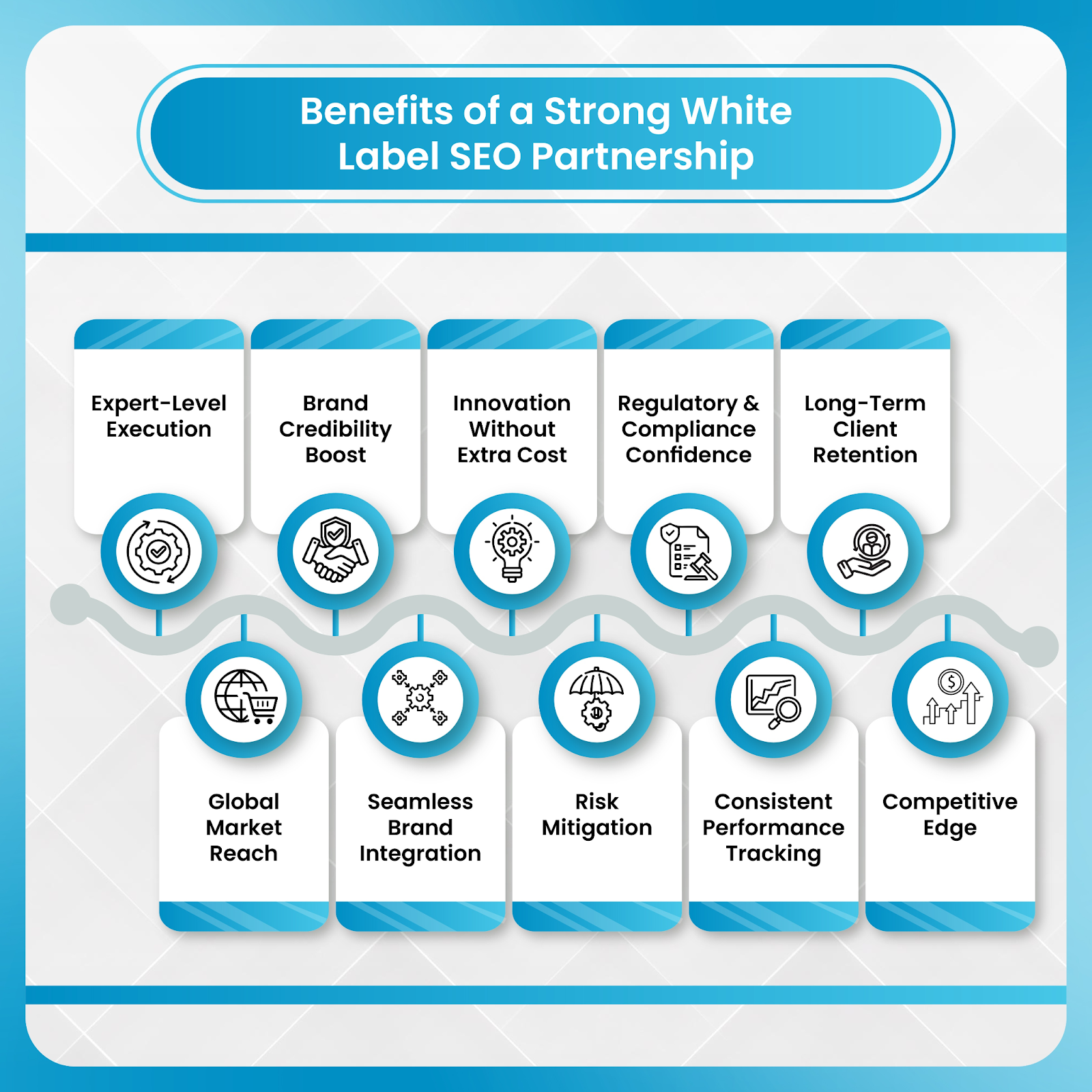
The Risks of Going It Alone
Attempting to manage international SEO without a specialized partner is fraught with risk. The learning curve is steep, and the cost of errors can be high. Agencies that try to handle it all in-house often face:
- Poor Keyword Targeting: A lack of multilingual expertise leads to targeting the wrong keywords, resulting in low-quality traffic and poor conversion rates.
- Missed Opportunities: An inadequate understanding of local search engines means your clients miss out on vast segments of their target audience.
- Resource Drain: The demands of creating localized content and implementing complex technical SEO can stretch your internal team thin, impacting the quality of service for all your clients.
- Damaged Client Relationships: Difficulty in managing client expectations across diverse regions and failing to deliver promised results can quickly lead to client churn and a damaged reputation.
- Costly Technical Errors: Simple mistakes in hreflang implementation or sitemap configuration can cause significant ranking drops and take months to fix.
Measuring the Success of International SEO Campaigns
To demonstrate the value of your services to international clients, it's essential to track the right metrics. A good white label SEO partner will provide you with comprehensive data and reports that showcase progress in each target market. Key Performance Indicators (KPIs) to monitor include:
- Organic Traffic by Region: Track the growth of organic traffic from each target country or language to demonstrate market penetration.
- Local Keyword Rankings: Monitor rankings for top keywords in each specific market.
- Click-Through Rate (CTR) and Conversion Rates by Region: Assess the quality of the traffic and its impact on the client's business goals.
- Engagement Metrics: Analyze bounce rate, session duration, and pages per session for each region to understand user engagement levels.
- Region-Specific Backlink Acquisition: Measure the success of link-building campaigns tailored to each market.
- Technical Health and Page Speed: Monitor Core Web Vitals and other technical health metrics on a per-country basis.
- Revenue and ROI by Market: The ultimate measure of success. Compare the revenue generated from each market against the cost of the white label SEO services.
- SERP Features and Visibility: Track visibility in local packs, featured snippets, and other rich results specific to each region.
By presenting this data in a clear, white-labeled dashboard, you can effectively communicate the value you are delivering and build strong, lasting relationships with your international clients.
How DashClicks Streamlines International SEO Fulfillment?
Platforms like DashClicks are designed to make white label SEO services seamless and scalable. When an agency partners with DashClicks for international SEO, they gain access to a powerful, all-in-one platform that simplifies every aspect of the process.
Your agency can place orders for specific international SEO tasks—such as keyword research for the German market or Japan—and the work is executed by a vetted team of experts. The platform provides a centralized dashboard where you can track progress, communicate with the fulfillment team, and generate white-labeled reports for your clients.
DashClicks’ streamlined workflow allows your agency to manage multiple international campaigns simultaneously without being overwhelmed, ensuring consistent quality and transparent reporting under your own brand.
Your Gateway to Global Expansion
For ambitious agencies, the question is not whether to serve international clients, but how to do so effectively and profitably. The complexities of global SEO can seem overwhelming, but they don't have to be a barrier to growth. White label SEO provides a scalable, cost-effective, and expert-driven solution that empowers you to confidently expand your services across borders.
By partnering with a trusted white label SEO agency, you can offer world-class international SEO services under your own brand, delivering consistent quality and measurable results. This strategic partnership allows you to increase revenue, enhance client retention, and solidify your reputation as a leading global agency. Stop letting a lack of resources hold you back. It's time to unlock your agency's full potential and step onto the world stage.
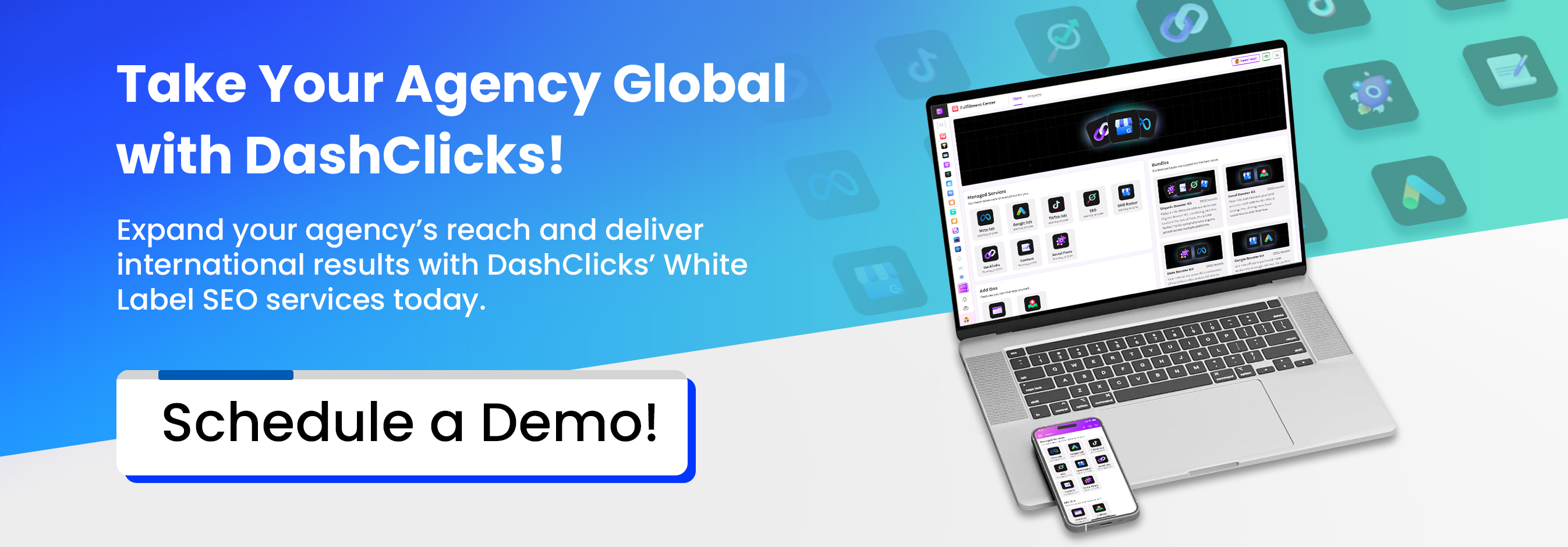

The Role of White Label PPC in Meeting Client Demands for Multi-Platform Ads
In today’s digital world, clients expect more than just a presence on one advertising platform—they expect complete visibility across every channel their customers use. The multi-platform advertising landscape is no longer a nice-to-have; it’s a core expectation for brands that want to reach audiences with precision, consistency, and measurable ROI.
But for most marketing agencies, meeting these expectations isn’t easy. Managing campaigns across Google, Facebook, Instagram, LinkedIn, TikTok, and emerging platforms requires deep technical expertise, dedicated creative resources, and advanced tracking systems. Balancing all that while maintaining profit margins and delivering consistent results can quickly overwhelm even experienced teams.
That’s where white label PPC services come in. By partnering with specialists who handle the complex, platform-specific aspects of campaign management, agencies can expand their service offerings, improve performance, and keep costs under control—without needing to build entire departments from scratch.
What Is Multi-Platform Advertising?
Multi-platform advertising goes far beyond running campaigns on Google and Facebook. It encompasses a comprehensive approach that includes search, social, video, display, programmatic, and even connected TV advertising. Each platform serves different purposes in the customer journey and requires specialized knowledge to maximize results.
Search and Shopping Platforms like Google and Bing capture high-intent users actively looking for solutions. These platforms excel at converting ready-to-buy customers but require expertise in PPC keyword research, bid management, and shopping feed optimization.
Social Media Platforms, including Facebook, Instagram, LinkedIn, and TikTok, focus on discovery and engagement. Users on these platforms aren't necessarily looking to buy immediately, so campaigns must be crafted to build awareness and nurture interest over time.
Emerging Platforms such as Pinterest, Snapchat, and Reddit offer unique opportunities to reach niche audiences. Reddit's community-based targeting allows brands to connect with highly engaged users, while Pinterest excels at capturing users in the inspiration phase of their buying journey.
Cross-Device Integration ensures campaigns follow users across smartphones, tablets, desktops, and connected TVs. This omnichannel marketing approach requires sophisticated tracking and attribution models to understand the full customer journey.
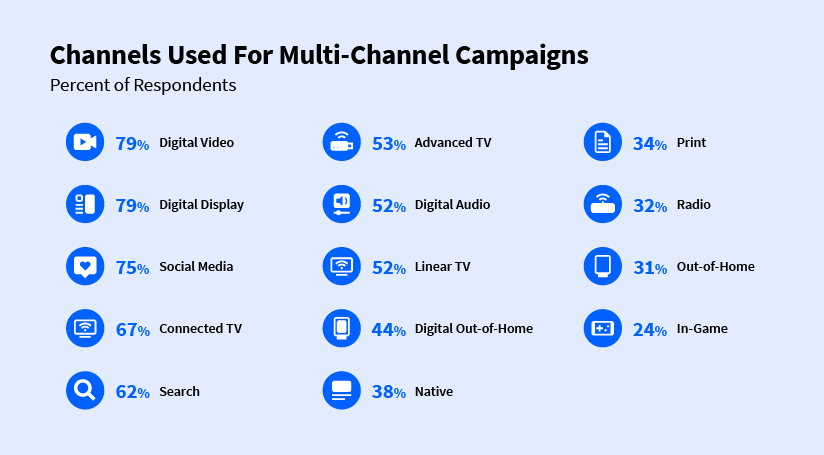
Image Source: StackAdapt
The key challenge is that each platform operates differently. LinkedIn users respond to professional, B2B-focused content, while TikTok users engage with entertaining, authentic video content. Successful multi-platform campaigns require a deep understanding of platform-specific user behavior and preferences.
Why Clients Now Demand Multi-Platform Ads?
As client expectations evolve, a single‑channel campaign is increasingly seen as a liability rather than a strength. Here are the main reasons clients now insist on multi‑platform strategies:
- Fragmented Audience Attention: Consumers today hop across devices and apps. In 2025, data shows the typical user actively visits about 6.84 different platforms in a month. This means by the time someone converts, they’ve likely seen the brand multiple times across different channels. Limiting your presence to one or two platforms risks missing critical touchpoints.
- Platform‑Specific KPIs: Many clients want to see performance broken down by channel—not just aggregate numbers. They expect ROAS, cost per acquisition, or conversion rates for Search, Social, Display, TikTok, etc. It’s no longer enough to say “overall ROAS was 4×”; they want to know which platforms drove that number and why.
- Risk Aversion & Visibility: Clients often worry they’re leaving money on the table by skipping platforms. They expect agencies to “be everywhere”—covering all meaningful audience touchpoints without bloating internal resources. If a competitor appears on a new or trending platform and drives success, clients demand that their campaigns also be nimble enough to pivot.
- Audience Journey Complexity: Modern buyer journeys are non-linear. A consumer may first discover a brand via reels, then research via Google Search, revisit via display or email, and finally convert via a shopping ad. A campaign that treats platforms in isolation can’t capture the full path—and will underinvest or misattribute effort along the way.
- Performance Accountability: Clients now track not only final conversions but micro‑conversions: email signups, content downloads, product views, and add-to-carts. They want to see cross-channel ROI—how earlier steps in the funnel influence final sales. Agencies must provide a full picture of performance, not just a narrow lens.
- Data‑Driven Expectations: Clients want detailed insights, not just high-level summaries. They expect to see which audiences, creatives, or messaging worked on each platform. They demand transparency and the ability to drill into numbers themselves. Incomplete or opaque reporting no longer cut it.
- Behavioral Trends & Stats: Recent research supports the value of multi-platform exposure. Companies with diversified social media strategies, keeping a presence across multiple channels rather than focusing narrowly, achieved 2% to 5% higher total web sales. Another analysis showed cross-platform campaigns led to a 25% increase in purchase intent when properly sequenced across screens.
These findings show that overlapping messages across platforms reinforce brand awareness, improve trust, and increase the likelihood of purchase.

Case Insight (Retail Client Example)
A retail client insisted on synchronized campaigns across search, shopping, and social channels. They required consistent creative themes, messaging alignment, and coordinated targeting across all touchpoints.
The agency had to navigate the challenges of differing ad formats (shopping feeds vs. dynamic social vs. text search), align budgets, and maintain brand coherence while optimizing for each platform’s strengths. This case illustrates how complex and resource-intensive multi-platform execution can be—but is now treated as a baseline expectation.
Why Agencies Struggle with Multi-Platform Demands?
Running effective multi-platform advertising campaigns sounds good in theory—but in practice, most agencies face deep operational and structural challenges that limit their ability to deliver consistent results. Here’s why:
- Specialization Overload: Agencies often structure their teams by platform—one person manages Google Ads, another handles Meta, and another focuses on LinkedIn or TikTok. While this setup ensures platform expertise, it also creates silos. Each specialist operates independently, leading to bottlenecks in strategy alignment, campaign execution, and reporting. When campaigns need to be coordinated across six or more channels, communication slows down and performance suffers.
- Inconsistent Attribution and Measurement: Cross-platform attribution remains one of the biggest hurdles. Many agencies still rely on basic last-click attribution, which credits the final ad interaction before conversion. This outdated model hides the real influence of upper-funnel campaigns like social and video. As a result, agencies lose visibility into how each platform contributes to ROI, leading to misinformed budget decisions and inconsistent reporting to clients.
- Creative Production Fatigue: Every platform demands its own creative format, tone, and optimization strategy. Scaling ad creatives for multiple networks—Google, Facebook, Instagram, LinkedIn, TikTok, YouTube, and more—quickly overwhelms internal teams. Designers and copywriters can only produce so much at once, leading to slower campaign launches and creative fatigue. Over time, this can cause performance dips simply because the creative refresh cycle can’t keep up with platform demands.
- Emerging Platform Blind Spots: The digital ad landscape evolves fast. Platforms like TikTok, Reddit Ads, and emerging retail media networks require specialized knowledge and constant learning. Many agencies struggle to stay ahead, often choosing to ignore these platforms altogether or experimenting without the proper expertise. This results in missed opportunities and subpar performance on channels that could otherwise drive growth.
- Metric Insight: Performance Decline Across Platforms: According to an industry survey in 2024, agencies relying solely on in-house PPC teams often struggle to maintain consistent CTRs and ROAS when managing campaigns across more than three platforms. The lack of unified expertise and integrated tools contributes to declining efficiency and uneven performance metrics.
- Cross-Platform Expertise Gaps: It’s rare for an in-house team to include specialists for every platform—especially emerging ones. Instead, a few generalists are expected to handle multiple networks, each with different ad structures, bidding strategies, and creative nuances. This gap often shows up in weaker results on newer or less familiar platforms, reducing the overall campaign impact.
- Time-Intensive Campaign Setup: Running ads across multiple platforms means managing separate campaigns, ad sets, creatives, budgets, and reporting dashboards. Each one has its own interface and rules, which multiply setup and optimization time. What should take hours can stretch into days, delaying go-lives and slowing down performance testing.
- Inefficient Tools and Fragmented Reporting: Many agencies rely on a patchwork of tools for campaign management and reporting. One dashboard for Google, another for Meta, a third for analytics, and maybe a spreadsheet to tie it all together. This fragmented system creates data discrepancies, slows reporting, and makes it difficult to get a unified view of campaign performance.
- Client Expectation Management: Finally, agencies often struggle to explain performance differences across platforms. A TikTok campaign behaves very differently from a Google Search campaign—but clients don’t always understand why. Without clear education and communication, this leads to frustration, misaligned expectations, and a perception that the agency is underperforming.
How White Label PPC Solves Multi-Platform Challenges?
White label PPC services offer agencies immediate access to platform specialists without the time and cost investment required to build internal expertise. This partnership model allows agencies to offer comprehensive multi-platform services while maintaining focus on their core competencies.
- Dedicated Platform Specialists ensure each campaign receives expert attention. Instead of one generalist managing Google, Facebook, and TikTok campaigns, white label providers assign platform-specific experts who stay current with the latest features, best practices, and optimization techniques. This specialization typically results in 15-30% better performance compared to generalist management.
- Advanced Attribution and Analytics come standard with quality white label PPC services. These providers invest in sophisticated tracking and reporting tools that most agencies can't justify purchasing independently. Clients receive detailed cross-platform attribution reports showing exactly how each channel contributes to their success.
- Scalable Creative Production eliminates the bottleneck that prevents many agencies from expanding across platforms. White label providers typically maintain creative teams experienced in producing platform-optimized content at scale. This capability allows agencies to launch campaigns quickly without overwhelming internal resources.
- Unified Reporting Systems simplify client communication by presenting multi-platform performance in easily understood dashboards. Instead of juggling separate reports from each platform, agencies receive comprehensive summaries that highlight key insights and optimization opportunities.
- Early Access to New Features gives agencies competitive advantages. Established white label PPC providers often participate in platform beta programs, gaining early access to new advertising features and optimization tools. This early access translates into first-mover advantages for agency clients.
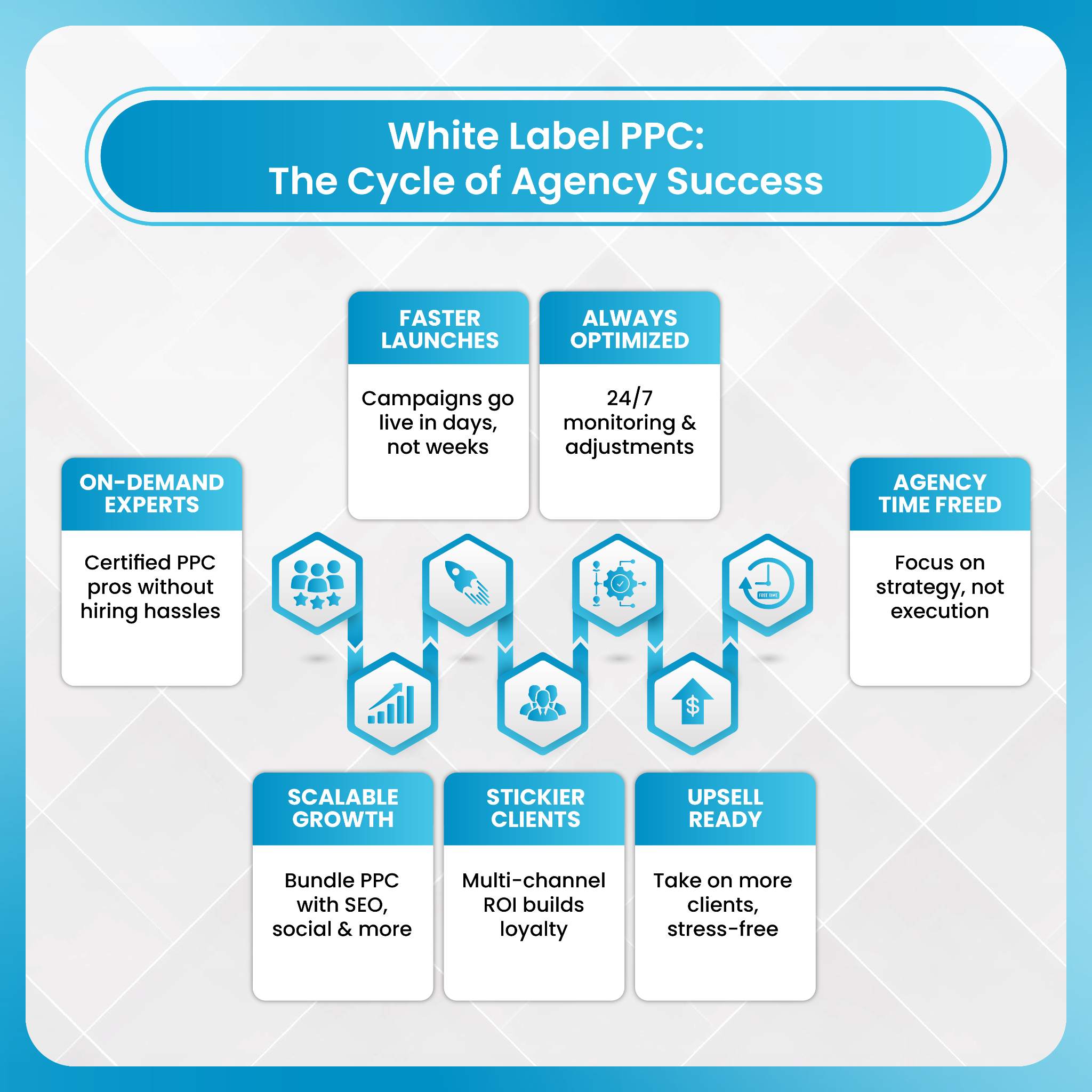
DashClicks exemplifies how white label PPC services can transform an agency's multi-platform capabilities. Their platform provides agencies with access to specialists across Google Ads, Facebook, Instagram, LinkedIn, TikTok, and other major platforms. The unified dashboard combines performance data from all channels, giving agencies clear visibility into cross-platform campaign effectiveness.
More importantly, DashClicks handles the technical complexity of multi-platform management while allowing agencies to maintain direct client relationships and brand their services appropriately.
Measuring Multi-Platform Success
Running campaigns across several platforms only works if you can measure what’s actually driving results. Without clear, unified reporting, agencies risk misallocating budgets, missing optimization opportunities, and losing client confidence. Measuring success in a multi-platform environment requires both a holistic approach and the right tools.
1. Holistic Metrics: Instead of looking at each platform in isolation, agencies need to focus on how all channels contribute to the customer journey. Multi-touch attribution models show the full picture by assigning credit to every meaningful interaction, not just the last click. Tracking return on ad spend (ROAS) by platform, applying frequency caps to prevent ad fatigue, and monitoring engagement rates for each channel together create a more accurate measure of campaign health and efficiency.
2. Client-Facing Dashboards: Clients expect transparency and simplicity. A unified dashboard that combines data from Google Ads, Meta, LinkedIn, TikTok, and other platforms helps agencies present results clearly and consistently. Instead of juggling multiple reports, clients can see how each channel contributes to overall goals in one place. This not only builds trust but also saves time during review meetings and performance updates.
The white label dashboard by DashClicks offers agencies a unified space to share reports, track progress, and manage client communication in real time. The dashboards allow clients to view key campaign metrics, files, and updates through a clean, organized interface.
3. Trend Analysis and Predictive Insights: Data isn’t just for reporting—it’s for forecasting. By analyzing historical performance data, agencies can identify seasonal patterns, platform-specific strengths, and creative trends. Predictive analytics takes this a step further by projecting future ROI and helping plan budget distribution across platforms. This kind of forward-looking insight makes campaign strategies smarter and improves both upsells and client retention.
4. KPI Standardization: Every platform measures success differently—clicks, conversions, views, or engagement—but without standardized KPIs, it’s nearly impossible to compare performance across channels. Establishing consistent metrics, such as cost per acquisition (CPA), conversion rate, and ROAS, allows agencies to benchmark campaigns fairly and optimize with confidence.
Expert Insight:
“Agencies that cannot visualize multi-platform performance cannot retain clients.”
— Digital Marketing Analyst, 2024
In a multi-platform world, success depends on the ability to connect data, identify insights, and communicate results clearly. Agencies that master unified measurement will outperform those that treat each platform as a separate silo.
Building Long-Term Client Relationships
Multi-platform advertising capabilities have become essential for client retention in competitive markets. Agencies that can't deliver comprehensive cross-platform strategies risk losing clients to more capable competitors.
- Competitive Differentiation emerges naturally when agencies can offer genuine multi-platform expertise. While many agencies claim multi-platform capabilities, few can deliver the specialized knowledge and optimization strategies that drive superior results across all channels.
- Client Confidence increases when agencies demonstrate deep platform knowledge and can explain the strategic rationale behind cross-platform campaign decisions. Clients trust agencies more when they see evidence of specialized expertise rather than generic approaches applied across all platforms.
- Revenue Growth opportunities multiply when agencies can expand client campaigns across additional platforms. Instead of losing budget to other agencies, comprehensive multi-platform capabilities allow agencies to capture larger shares of client advertising spend.
- Operational Efficiency improves when agencies partner with white label PPC providers rather than trying to build internal expertise across all platforms. This efficiency translates into better margins and more time to focus on strategic client relationships.
Taking Action on Multi-Platform Opportunities
The multi-platform advertising landscape will only become more complex as new platforms emerge and existing channels evolve their advertising offerings. Agencies that invest in comprehensive multi-platform capabilities now will be better positioned for long-term success.
White label PPC agency offer the fastest path to multi-platform expertise without the risks and costs of building internal capabilities across all channels. Quality providers like DashClicks combine platform specialists, advanced analytics, and unified reporting systems that enable agencies to deliver superior results while maintaining operational efficiency.
The agencies that thrive in the coming years will be those that embrace multi-platform strategies and invest in the tools and partnerships needed to execute them effectively. The question isn't whether to pursue multi-platform capabilities—it's how quickly you can implement them to meet evolving client expectations.
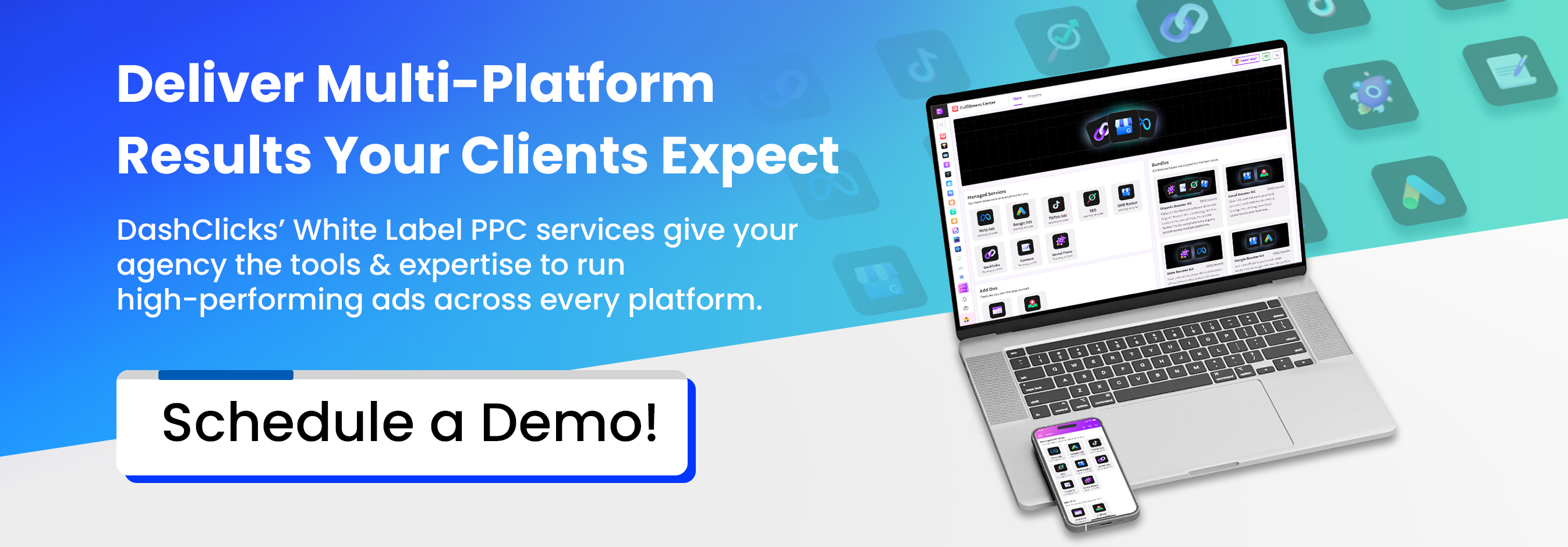
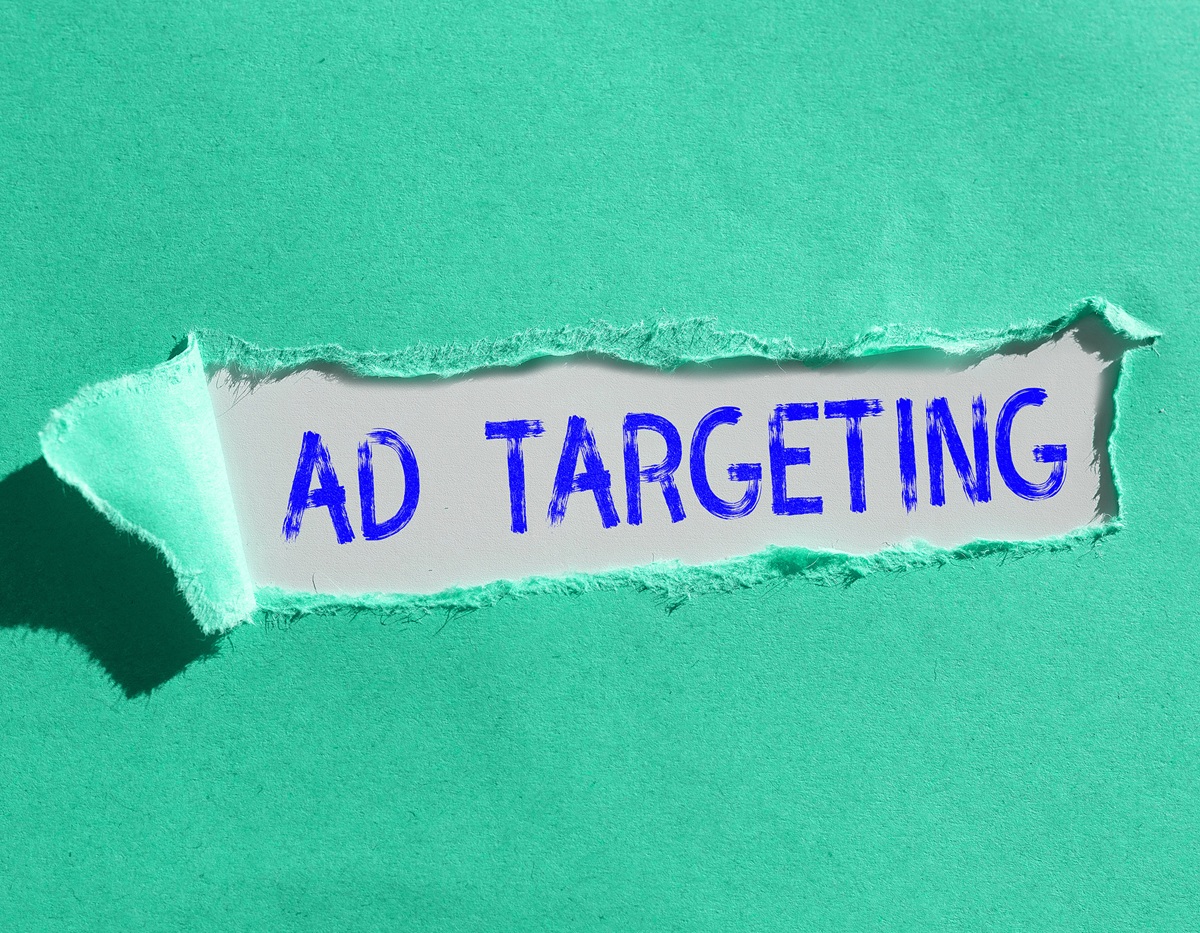
Handling Client Demands for Advanced Targeting Using White Label Facebook Ads Services
When clients start demanding more sophisticated Facebook advertising strategies, many agencies find themselves caught between a rock and a hard place. They want to deliver exceptional results, but advanced targeting requires specialized knowledge, dedicated resources, and constant platform updates that can overwhelm internal teams.
According to recent data from Epsilon, 73% of marketers report that personalized targeting directly improves retention and conversion rates. This statistic highlights why clients are pushing for more advanced approaches—they've seen the potential returns and want their agencies to deliver them.
"Advertisers are moving past reach. They want relevance at scale — and agencies must keep pace," explains Andrew Foxwell, a recognized Facebook Ads strategist. This shift from broad targeting to precision marketing has created new expectations that many agencies struggle to meet.
The solution lies in leveraging Facebook Ads services. These partnerships provide the infrastructure, expertise, and technology needed to execute sophisticated targeting strategies without overwhelming your internal resources or compromising on quality.
Understanding Advanced Facebook Targeting Options
Facebook's advertising platform offers numerous sophisticated targeting capabilities that go far beyond basic demographic and interest-based targeting. Understanding these options is crucial for agencies looking to deliver results that exceed client expectations.
1. Behavioral Segmentation: This approach targets users based on their actual behaviors rather than stated interests. You can reach people based on their purchase intent, browsing habits, and engagement history across Facebook's family of apps. This method proves particularly effective because it focuses on what people do rather than what they say they're interested in.
2. Custom Audiences: Using first-party data like email lists and website visitor information, custom audiences allow you to create hyper-relevant campaigns. These audiences typically perform better because they're built from people who already have some relationship with your client's brand.
3. Value-Based Lookalike Audiences: Rather than creating lookalikes based on all customers, value-based audiences focus on high-value actions. You can weight audiences based on lifetime value, repeat purchases, or other meaningful metrics that matter most to your client's business.
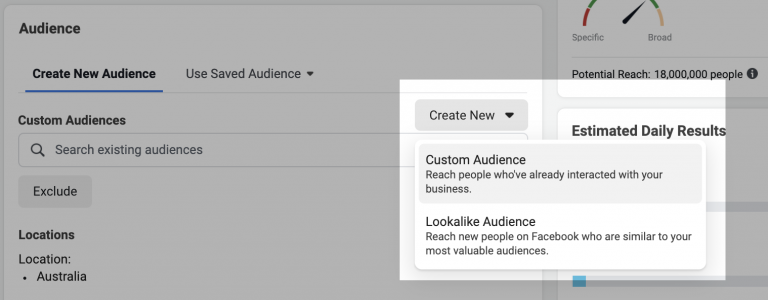
4. Dynamic Retargeting: This feature serves personalized ads based on specific products or services users have viewed. For e-commerce clients, this means showing ads for exact items people looked at, dramatically increasing relevance and conversion potential.
5. Omnichannel Sequencing: Coordinate messaging across Facebook, Instagram, Messenger, and the Audience Network to create cohesive customer journeys. This approach ensures your client's message reaches prospects at multiple touchpoints.
6. Geographic Precision Targeting: Combine offline and online data to target users in specific locations with remarkable accuracy. This proves especially valuable for local businesses or companies with specific geographic focus areas.
7. Predictive Audience Modeling: AI-driven insights help identify high-intent audiences before they've shown obvious buying signals. These predictive models can significantly expand your Facebook ad targeting reach while maintaining quality.
8. Compliance-Focused Targeting: Ensure campaigns meet privacy regulations and Meta's evolving policies while still delivering performance. This becomes increasingly important as data privacy laws continue to evolve.
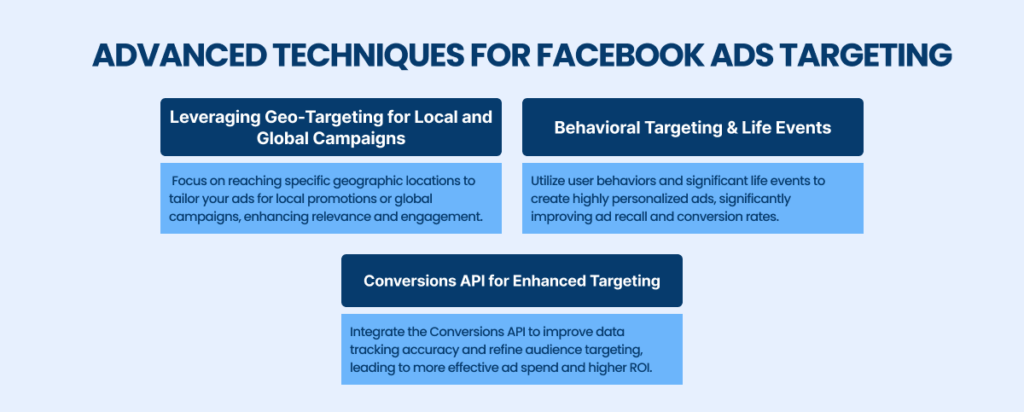
Image Source: Azarian Growth Agency
For example, a SaaS client using predictive lookalike audiences saw trial sign-ups increase by 35% over three months, demonstrating the power of advanced targeting when executed properly.
Why Advanced Targeting Matters for Client Success?
The importance of sophisticated targeting extends beyond simple performance improvements. It fundamentally changes how agencies can serve their clients and build lasting business relationships.
- Improved ROI and Reduced Ad Waste: Advanced targeting ensures ad spend reaches the most relevant audiences, significantly reducing cost per conversion. Instead of casting wide nets and hoping for the best, agencies can focus their budget on prospects most likely to convert.
- Enhanced Client Retention: When clients see measurable results from advanced targeting strategies, they're more likely to continue working with your agency long-term. WordStream's 2024 data shows that agencies leveraging advanced targeting report 30% higher client satisfaction rates.
- Personalized Campaigns at Scale: Advanced targeting enables segmented messaging without dramatically increasing workload. You can create personalized experiences for different audience segments while managing campaigns efficiently.
- Strategic Goal Alignment: These targeting options allow campaigns to align precisely with specific client objectives, whether that's lead generation, e-commerce sales, or appointment bookings. This alignment makes it easier to demonstrate a clear ROI.
For Example, local business campaigns targeting prior buyers and lookalike audiences resulted in 50% higher repeat sales over six months, showing how advanced targeting can drive substantial business impact.
"The future of paid social targeting is less about who we target and more about how we feed the algorithms the right data," notes Jon Loomer, a respected voice in Facebook advertising. This insight emphasizes the importance of data quality and strategic thinking in advanced targeting.

Common Barriers Agencies Face with Advanced Targeting
Despite the clear benefits of sophisticated targeting, many agencies struggle to implement these strategies effectively. Understanding these challenges is the first step toward finding solutions.
- Fragmented Data Sources: Managing multiple clients often means dealing with different CRMs, tracking setups, and offline-to-online data flows. Consolidating these diverse data sources into actionable Facebook audiences requires technical expertise and time that many agencies lack.
- Translating Business Goals into Targeting Signals: Clients typically care about revenue impact, not clicks or impressions. Many agencies struggle to map specific business KPIs like repeat purchases or lead quality into advanced targeting strategies that actually move the needle.
- Client-Specific Niche Requirements: Industries like healthcare, legal, and finance require granular audience segmentation while adhering to strict regulatory requirements. Creating compliant yet high-performance campaigns requires specialized knowledge that most general agencies don't possess.
- Experimentation Fatigue: Advanced targeting often requires iterative testing of custom audiences, dynamic lookalikes, and multi-stage retargeting sequences. Internal teams can quickly become overwhelmed managing multiple experiments simultaneously across different client accounts.
- Inefficient Feedback Loops: Complex funnels and attribution models can make it difficult to interpret performance metrics accurately. Teams may misread data and make suboptimal audience adjustments, wasting time and budget.
- Platform Update Challenges: Meta frequently updates AI-driven audience features like Advantage+ and Conversions API functionality. Agencies without dedicated specialists often fall behind on leveraging these new capabilities quickly.
One example involves a SaaS client who demanded multi-stage lookalikes segmented by product usage, purchase likelihood, and engagement level. The agency's internal team misconfigured the audience sequences, leading to significant wasted spend and a frustrated client relationship.
How White Label Facebook Ads Services Bridge the Gap?
White label Facebook Ads services provide the specialized expertise and infrastructure that agencies need to execute advanced targeting without overwhelming their internal resources.
- Cross-Client Data Normalization and Audience Mapping: A professional white label Facebook ads partner have systems in place to consolidate data from multiple platforms and clients into clean, actionable audiences. They handle the technical complexity of data integration without requiring agency intervention.
- Business-Goal-Aligned Targeting Playbooks: These partners translate revenue and lead-quality goals into proven targeting frameworks. They understand how to create multi-stage retargeting sequences and lifetime-value-weighted lookalikes that actually drive business results.
- Regulatory-Compliant Niche Campaign Design: Specialized teams ensure campaigns for regulated industries like finance, healthcare, and legal services comply with both Meta's policies and industry regulations while maintaining strong performance.
- Scalable Experimentation Management: White label Facebook advertising partners can manage multiple audience experiments simultaneously across different client accounts. They have the bandwidth and systems to optimize campaigns dynamically without overwhelming agency teams.
- Real-Time Adaptive Targeting: Advanced analytics and AI monitoring systems continuously adjust custom audiences, creative rotations, and bid strategies based on performance data. This level of optimization typically requires dedicated specialists.
- Knowledge Transfer and Training: Many white label Facebook advertising partnership include training components that help agencies understand advanced strategies and improve their internal capabilities over time.
A local healthcare agency partnered with a white label service to implement adaptive multi-stage retargeting across Facebook and Instagram. They achieved a 40% reduction in cost per lead within two months while maintaining compliance across multiple HIPAA-relevant ad categories.

How DashClicks Transforms Advanced Facebook Targeting for Agencies?
DashClicks stands out in the white label space by offering comprehensive Facebook advertising services that seamlessly integrate advanced targeting capabilities with user-friendly management tools. Their platform combines sophisticated targeting technology with practical agency workflow solutions.
Their white label Facebook advertising service provides agencies with access to advanced targeting features through an intuitive dashboard that doesn't require extensive technical knowledge. Their team of certified Facebook advertising specialists handles the complex setup and optimization of custom audiences, lookalike segments, and dynamic retargeting campaigns while keeping agencies fully informed about strategy and performance.
What sets DashClicks apart is its focus on data integration and reporting transparency. They connect with existing client data sources to create comprehensive audience profiles, then translate that information into actionable targeting strategies. Their real-time reporting system shows exactly how advanced targeting features contribute to client results, making it easy for agencies to demonstrate value and justify continued investment in sophisticated campaigns.
"The right white-label partner turns complex targeting into a predictable system, letting agencies focus on strategy rather than firefighting," explains Savannah Sanchez, a respected Paid Social strategist. This perspective captures exactly how DashClicks approaches the challenge—by systematizing advanced targeting so agencies can focus on the agency-client relationship and business growth.
Measuring Success: Key Metrics for Advanced Targeting
Implementing advanced targeting requires sophisticated measurement approaches that go beyond basic metrics like clicks and impressions. Agencies need to track metrics that demonstrate real business impact.
- Cost Per Qualified Lead vs. Cost Per Click: While cost per click provides basic efficiency data, cost per qualified lead shows how targeting improvements affect lead quality. Advanced targeting should improve both the quantity and quality of leads generated.
- Customer Lifetime Value by Audience Segment: Track how different audience segments perform in terms of long-term value, not just immediate conversions. This data helps optimize targeting strategies for maximum client profitability.
- Return on Ad Spend by Audience Type: Different targeting approaches will yield different ROAS figures. Understanding which advanced targeting methods deliver the highest returns helps optimize budget allocation.
- Multi-Touch Attribution Metrics: Advanced targeting often involves complex customer journeys across multiple touchpoints. Multi-touch attribution shows how different targeting strategies work together to drive conversions.
- Engagement Quality Indicators: Monitor metrics like video completion rates, form submissions, and time spent on landing pages to understand how audience relevance affects engagement depth.
- Audience Retention and Repeat Engagement: Track how often targeted users return to engage with content or make additional purchases. This indicates the long-term effectiveness of targeting strategies.
- Predictive Performance Tracking: Use AI-driven analytics to identify which targeting approaches are likely to continue performing well based on trend analysis and target audience behavior patterns.
For example, a local healthcare agency tracked both cost per lead and customer lifetime value across different audience segments. They discovered that predictive lookalike audiences had 35% lower initial cost per lead and 25% higher six-month retention rates compared to interest-based targeting.
"Advanced targeting is only as valuable as your ability to prove it works. Track the right metrics and your clients won't just see results—they'll see strategy," advises Molly Pittman, a recognized authority in digital advertising.
Reporting Best Practices
Create branded dashboards that clearly show how advanced targeting contributes to client goals. Include benchmark comparisons and actionable insights that help clients understand the value of sophisticated approaches. Regular reporting should connect targeting improvements directly to business outcomes that clients care about most.
The Strategic Advantage of White Label Partnerships
The digital advertising landscape continues to evolve rapidly, with new targeting capabilities and platform updates arriving regularly. Agencies that try to handle everything internally often find themselves constantly playing catch-up, while those that leverage strategic partnerships can stay ahead of the curve.
White label Facebook Ads services provide more than just execution capabilities—they offer strategic advantages that can transform how agencies serve clients and grow their businesses. These partnerships allow agencies to offer enterprise-level sophistication while maintaining the personal relationships and strategic oversight that clients value.
The key lies in choosing partners who understand that advanced targeting isn't just about technical implementation—it's about translating complex capabilities into measurable business results. The best white label providers act as extensions of your team, bringing specialized expertise while maintaining your brand identity and client relationships.
For agencies ready to elevate their Facebook advertising capabilities without overwhelming their internal resources, white label partnerships represent a practical path forward. They provide the infrastructure, expertise, and ongoing optimization that advanced targeting requires, while allowing agencies to focus on what they do best—building client relationships and driving business growth.
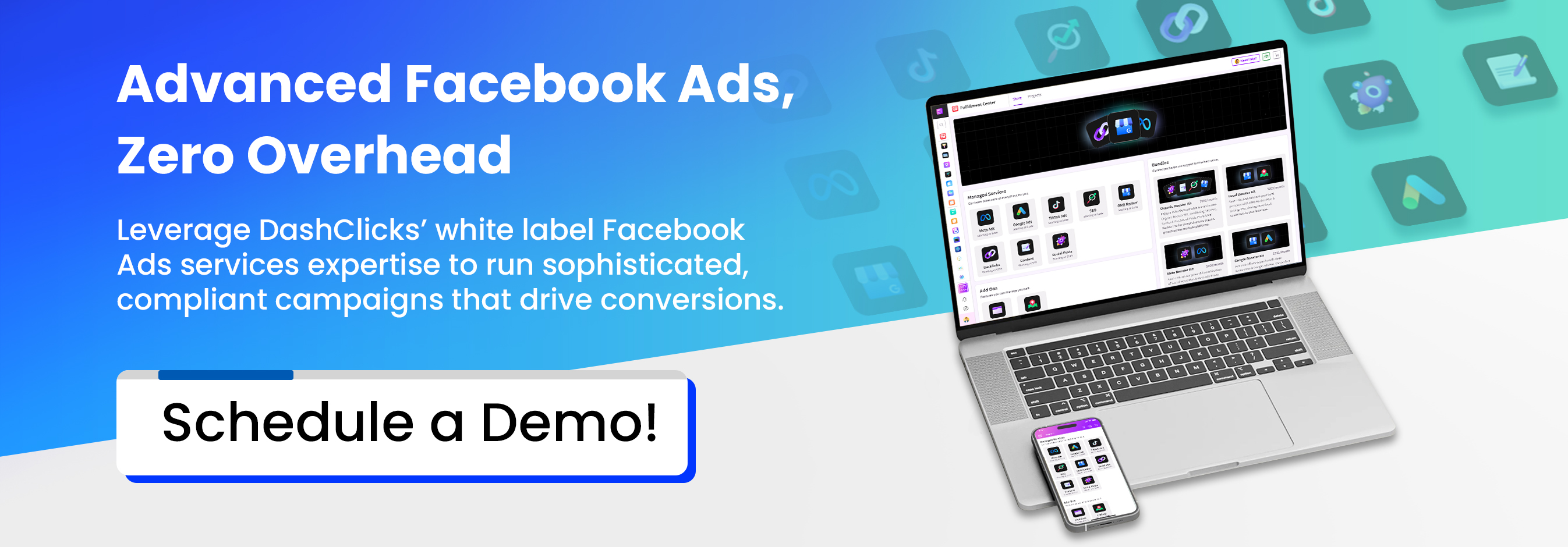
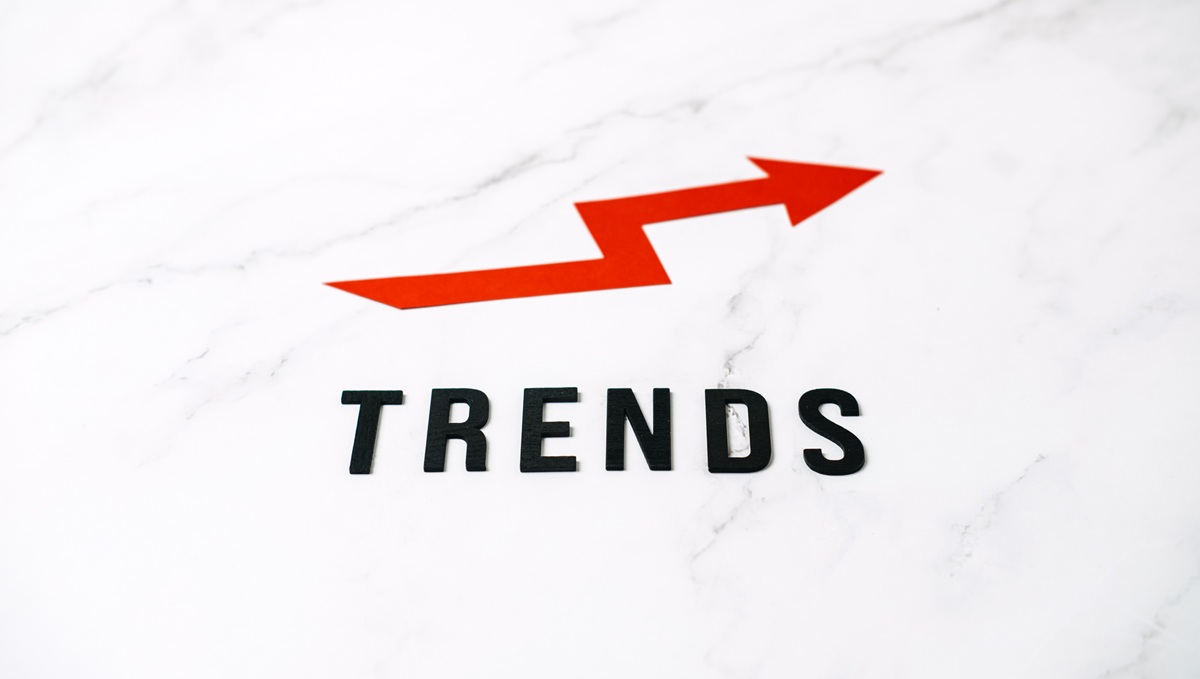
Unlocking Trend-Driven SEO Success: How White Label SEO Services Empower Agencies
The world of SEO is in constant motion. New AI developments, shifts in search behavior, and major platform updates mean that strategies that worked yesterday might be obsolete tomorrow. For marketing agencies juggling multiple clients, staying ahead of this curve is a significant challenge. This isn't just about missing out on the latest buzzwords; it's about failing to deliver the cutting-edge results clients expect.
Keeping up requires constant research, training, and investment in new tools—resources that are often scarce. Agencies find themselves caught in a loop of playing catch-up, unable to proactively integrate new strategies that could drive real growth for their clients.
So, how can an agency innovate without sacrificing the billable hours that keep the lights on? The answer lies in a strategic partnership. A white label SEO provider can bridge this gap, offering the specialized expertise and scalable resources needed to adopt and execute trend-driven strategies. By leveraging a white label SEO partner, agencies can not only keep pace with the industry but also position themselves as leaders, all while focusing on what they do best: building client relationships and growing their business.
The Latest SEO Trends (2024–2025) Agencies Must Adopt
To stay competitive, agencies need to master the trends shaping today’s search landscape. These aren't just minor tweaks; they represent fundamental shifts in how search engines understand and rank content.
1. AI-Powered SEO & Content Automation
Artificial intelligence is no longer a futuristic concept—it's a core component of modern SEO. AI-driven tools are revolutionizing keyword research for SEO, automating content generation, and providing predictive analytics that guide strategy.
For example, an agency partnered with a white label SEO provider could use AI-assisted content briefs to generate topic clusters that perfectly align with user intent, ensuring every piece of content is optimized for maximum impact from the start.
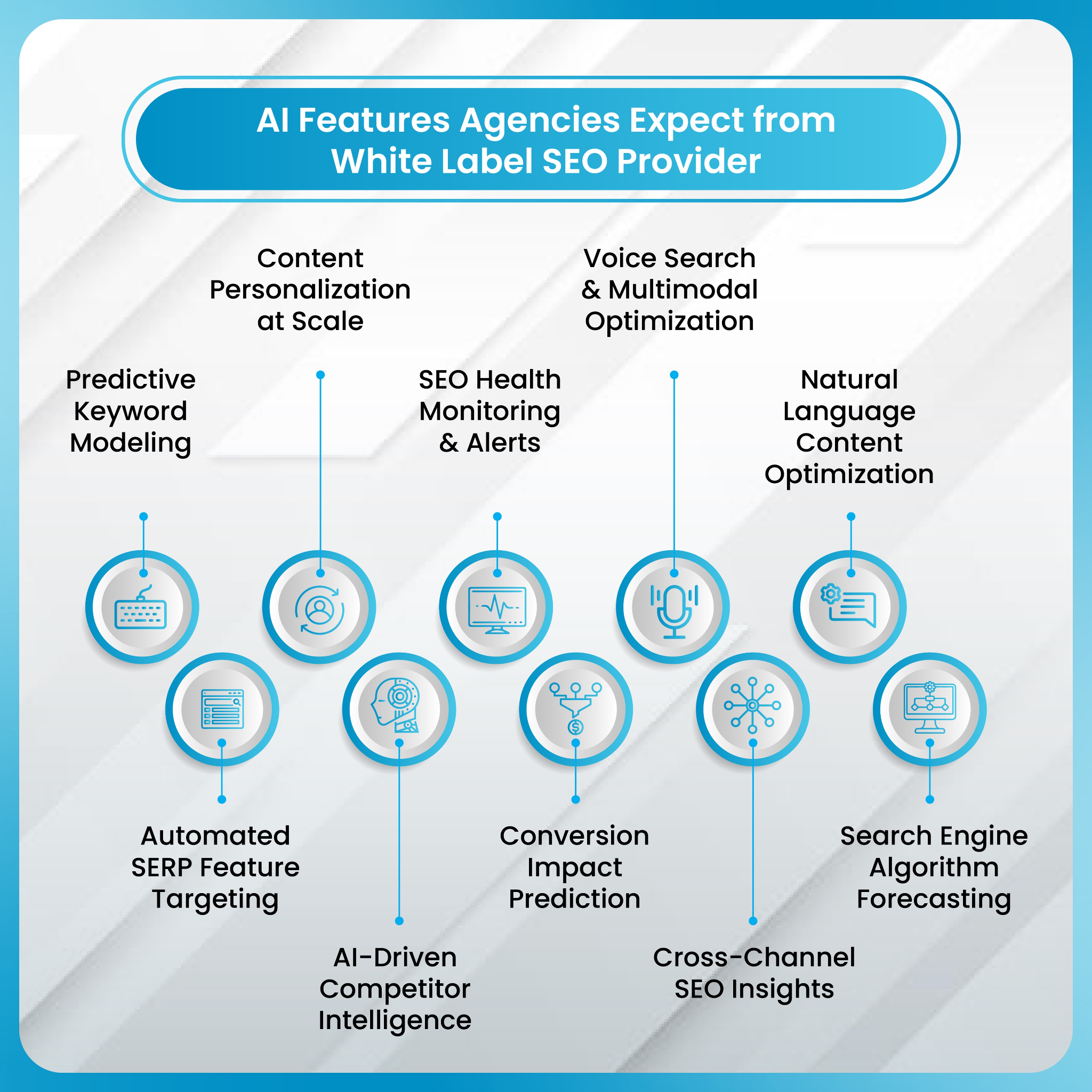
2. Core Web Vitals & User Experience Optimization
Google continues to prioritize user experience, making Core Web Vitals (CWV) non-negotiable. Mobile performance, site speed, and engagement signals are critical ranking factors. A client who sees their page load time improve might also see a 25% decrease in bounce rates, signaling to Google that their site provides a valuable and seamless experience. White label SEO services specialize in the technical optimizations needed to pass CWV assessments, a task that can be resource-intensive for in-house teams.
3. Voice & Visual Search Optimization
The way users search is changing. With the rise of smart speakers and advanced image recognition, optimizing for voice and visual search is essential. According to Pew Research, 40% of adults now use voice search daily. This requires a different approach to keywords, focusing on natural, conversational phrases and structured data that can be easily interpreted by voice assistants and image search algorithms.
4. Local SEO & Hyper-Localization
For businesses with physical locations, local SEO is more important than ever. This goes beyond simple directory listings. A comprehensive strategy includes Google Business Profile optimization, creating localized content, and building local links. For instance, a white label SEO agency helped one local clinic achieve a 3x growth in appointments by focusing on hyper-local tactics that connected them with patients in their immediate community.
5. Video SEO & Rich Snippets
Video content is booming, and optimizing it for search is crucial. Structured data, or schema markup, helps search engines understand the content of a video, making it eligible for rich snippets and featured placements in search results. An e-commerce client, for instance, saw their click-through rate (CTR) improve by 18% after their white label SEO partner implemented structured data for their product videos, making their listings stand out on the SERP.
6. Matching Search Intent
Ranking is no longer just about keywords; it's about aligning your content with what users actually want. Understanding user intent—whether it's informational, navigational, or transactional—is key to creating content that satisfies their needs. Backlinko's 2025 SEO Trends report highlights that failing to meet user intent drastically reduces engagement. Optimizing a client’s page to better match user intent has been shown to increase traffic by as much as 30%, as the content directly answers the user's query.
7. E-E-A-T & Authoritative Content
Google's emphasis on Expertise, Experience, Authoritativeness, and Trustworthiness (E-E-A-T) means that content must be credible and written by experts. Websites demonstrating high E-E-A-T are 40% more likely to rank on the first page. This requires a focus on building author profiles, securing high-quality backlinks, and creating comprehensive, well-researched content that establishes the brand as a trusted authority.
Future-Looking SEO Trends (2026+) Agencies Should Prepare For
The SEO landscape of tomorrow will be even more integrated with AI and focused on providing direct answers. Agencies that prepare for these future trends now will gain a significant competitive advantage.
- AI Search & Generative AI Integration: Predictive search and AI-curated experiences, like Google's AI Overviews, will become standard. Backlinko notes that these AI-generated summaries are already appearing at the top of search results. A white label SEO services partner can help by implementing advanced strategies like AI-driven topic clustering, which has been shown to boost client traffic by 40%.
- Semantic Search & Knowledge Graph Optimization: SEO will move further away from keywords and toward entities and concepts. Optimizing content with structured data to feed Google's Knowledge Graph will be essential for visibility. Pages with structured data are far more likely to appear in rich snippets, making them more prominent on the SERP.
- Cross-Platform Search Optimization: The search doesn't just happen on Google. Optimizing for Bing, Amazon, YouTube, and even social platforms like TikTok is becoming critical. An e-commerce client, for example, saw a 30% increase in sales after adopting a multi-platform SEO strategy that targeted customers where they shop and search.
- Zero-Click Searches & Declining CTRs: The rise of AI summaries and featured snippets means more searches will end without a click. As Backlinko points out, this contributes to the growth of "zero-click searches." The focus must shift from just driving clicks to optimizing for visibility within these snippets and rich results to ensure the brand's message is seen.
- Brand Presence as an Authority Signal: Brand mentions, even without a link, will increasingly influence rankings. Backlinko’s research suggests that search engines view unlinked mentions as a signal of authority. A SaaS company, for instance, may rank higher simply due to consistent brand mentions across industry blogs and forums.
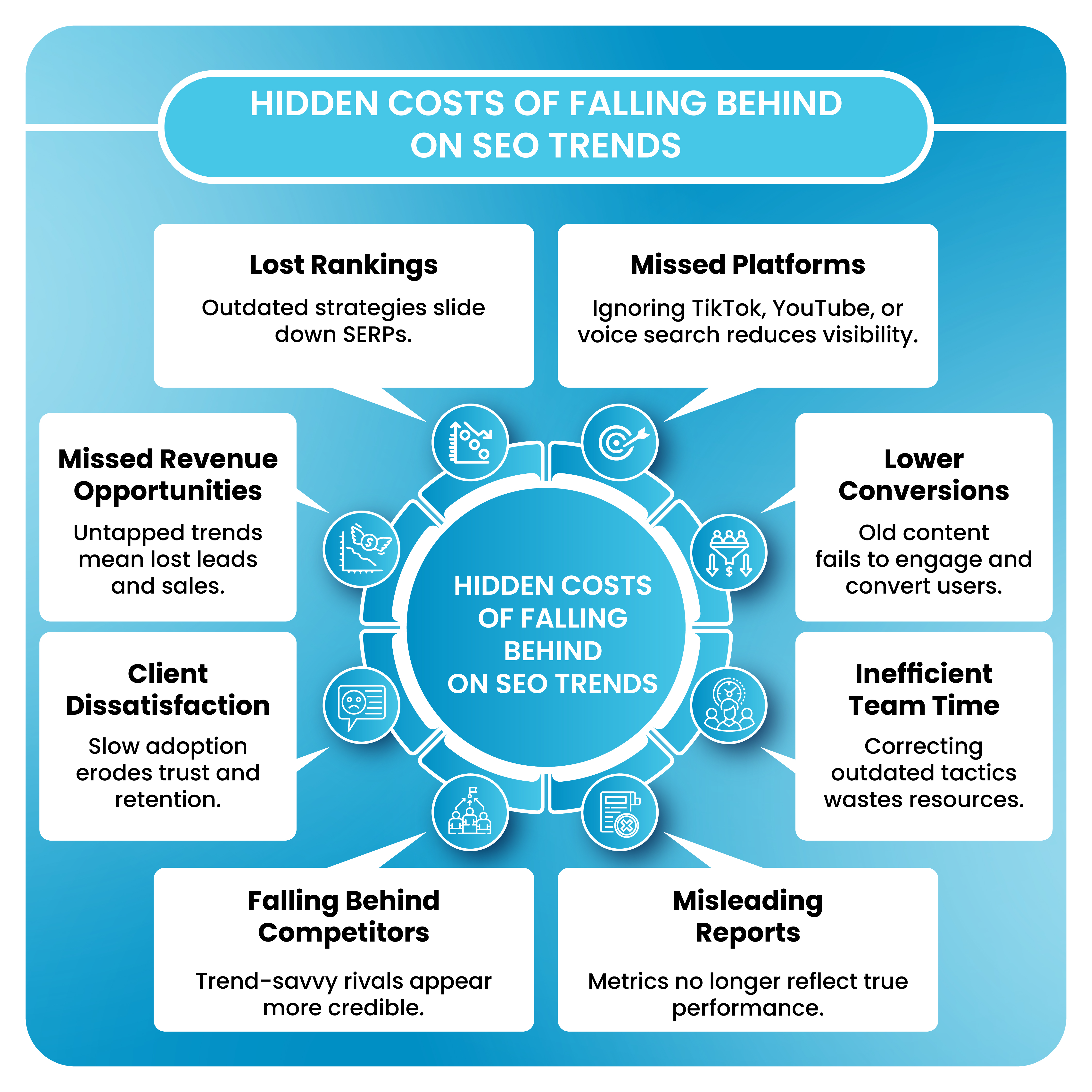
Why Do Agencies Struggle to Implement SEO Trends?
Knowing the trends is one thing; implementing them is another. Many agencies face significant internal hurdles that prevent them from staying ahead.
- Innovation vs. Billable Hours Conflict: Agencies generate revenue by servicing clients, not by investing in R&D. Time spent experimenting with AI-assisted clustering or optimizing for zero-click searches is time not spent on billable work, leaving agencies in a reactive, not proactive, position.
- Difficulty Scaling Niche-Specific Trend Adoption: SEO trends are not one-size-fits-all. A healthcare client may need HIPAA-compliant AI solutions, while an e-commerce client wants predictive search optimization. Most agencies lack the specialized bandwidth to tailor trend adoption across multiple industries at once.
- Lag Between Trend Emergence and SOP Creation: Implementing new SEO trends requires structured processes and workflows. Developing these standard operating procedures (SOPs) internally can take months. By the time they are ready, the trend is already mainstream, and the competitive advantage is lost.
- Talent Drain & Specialist Burnout: SEO specialists with cutting-edge skills are in high demand and are often expensive. Agencies frequently find themselves in a costly cycle of hiring, training, and losing top talent to larger in-house roles, making it impossible to sustain long-term trend adoption.
- Inconsistent Data Across Platforms: Analyzing trends requires accurate data from multiple sources, like SERP volatility from Semrush and CTR shifts from Google Search Console. Agencies can waste countless hours trying to reconcile conflicting data, which delays execution and hinders strategic decision-making.
- Fear of Over-Promising Trend Outcomes: Clients expect guaranteed ROI, but future-looking trends like generative AI search come with uncertainty. This hesitation causes agencies to miss valuable opportunities to position themselves as industry innovators and leaders.
How White Label SEO Services Help Agencies Adopt Trends?
This is where a white label SEO partner becomes a game-changer. They provide the infrastructure, expertise, and resources to overcome these challenges, allowing agencies to thrive.
- Plug-and-Play SOPs for Trend Adoption: White label SEO providers come equipped with proven frameworks for implementing new trends. They already have established SOPs for structured data, semantic search, and AI-driven content mapping, allowing agencies to bypass the lengthy internal development phase and start executing immediately.
- Cross-Vertical Trend Benchmarking: With experience managing hundreds of campaigns across various industries, white label providers offer invaluable insights. They know which trends deliver results in healthcare versus SaaS or e-commerce, enabling agencies to make data-driven decisions instead of guessing.
- Elastic Resourcing for Trend Spikes: Trends like video SEO or interactive content creation can create sudden demands for production that an in-house team can't meet. A white label service provides "on-demand" bandwidth, allowing agencies to scale up or down as needed without the burden of over-hiring.
- Access to Beta Tools & Early Trend Insights: Many white label providers have strong relationships with SaaS companies and often gain early access to beta features, like AI-driven SERP forecasting. This gives their agency partners a first-mover advantage.
- Risk-Buffered Experimentation Layer: A white label SEO partner can run small-scale trend pilots behind the scenes, testing new strategies before they are presented to clients. This allows agencies to innovate and appear forward-thinking while minimizing any potential risk to client campaigns.
- Client Expectation Management via White Label Reporting: Like DashClicks’ Analytics Software , which can be customized to highlight metrics tied directly to trend adoption, such as entity coverage or zero-click visibility. This helps reframe client conversations from being solely about rankings to focusing on overall visibility in an evolving search landscape.

How DashClicks Unlocks Trend-Driven Success?
Platforms like DashClicks are specifically designed to empower agencies by providing fully integrated white label SEO services. DashClicks combines powerful software with expert fulfillment services, allowing agencies to resell cutting-edge SEO under their own brand.
The platform offers a suite of tools for everything from analytics and reporting to lead generation and project management. This means an agency can instantly offer sophisticated services like advanced user experience optimization, AI-powered content strategies, and cross-platform SEO without needing to build the infrastructure or hire specialized teams.
With DashClicks, agencies can confidently sell trend-driven SEO, knowing they have a reliable partner to handle the execution, all while they focus on scaling their business and delighting their clients.
Measuring the Impact of Trend-Driven SEO: Key Metrics
To demonstrate the value of these advanced strategies, agencies need to track the right metrics. The old way of just looking at rankings is no longer enough.
- Search Visibility Beyond Rankings: As Rand Fishkin famously said, "Visibility is the new click." Track your presence in SERP features like featured snippets, People Also Ask boxes, and video carousels. Semrush data from 2023 showed that 65% of Google searches ended without a click, underscoring the importance of being seen, even if it doesn't lead to a website visit.
- Zero-Click Performance: Monitor how your CTR is trending. According to Backlinko, the CTR for the #1 position dropped to 27.6% in 2023. Analyze post-click engagement metrics like time on page and bounce rate to understand the quality of the traffic you are receiving.
- Entity & Semantic Signals: Go beyond keywords and measure entity salience and topic cluster coverage. As the late, great Bill Slawski put it, "Google is moving from strings to things." This shift to understanding concepts makes entity-based SEO crucial.
- Content Experience: Track Core Web Vitals, scroll depth, and video engagement. Google has confirmed that passing CWV can lead to a 24% lower bounce rate, proving that a better user experience directly impacts performance.
- Brand Authority (E-E-A-T): Monitor backlink quality, author bios, and external citations. A 2024 survey by Search Engine Journal found that 64% of marketers prioritize E-E-A-T. As SEO expert Marie Haynes notes, "Without E-E-A-T, rankings are temporary."
- Cross-Platform SEO: Measure your visibility on YouTube, Bing, and even TikTok. Google reported in 2022 that 40% of Gen Z now prefer using TikTok or Instagram for search, highlighting the need for a multi-platform approach.
- Business Impact (Client-Facing): Ultimately, clients care about the bottom line. Track leads, conversions, cost-per-acquisition (CPA), and the share of revenue driven by organic traffic. Data from BrightEdge shows that organic search drives 53% of all website traffic and 44% of revenue. As Aleyda Solis says, "SEO without ROI is vanity."
Partner for a Future-Proof Agency
Staying competitive in the fast-paced world of SEO requires more than just keeping up; it demands a proactive, forward-thinking approach. For most agencies, the internal resources needed to innovate, test, and scale new trends are simply out of reach. This is where the power of a white label SEO partnership becomes clear.
By leveraging the expertise, tools, and established processes of a white label SEO provider, agencies can instantly elevate their service offerings. They can deliver cutting-edge, trend-driven SEO that produces real results for clients, freeing up internal resources to focus on growth and client relationships. The fastest-growing agencies are those that are trend-savvy, and they use white label SEO partners to execute advanced strategies at scale. Don’t just react to the future of SEO—lead the charge.
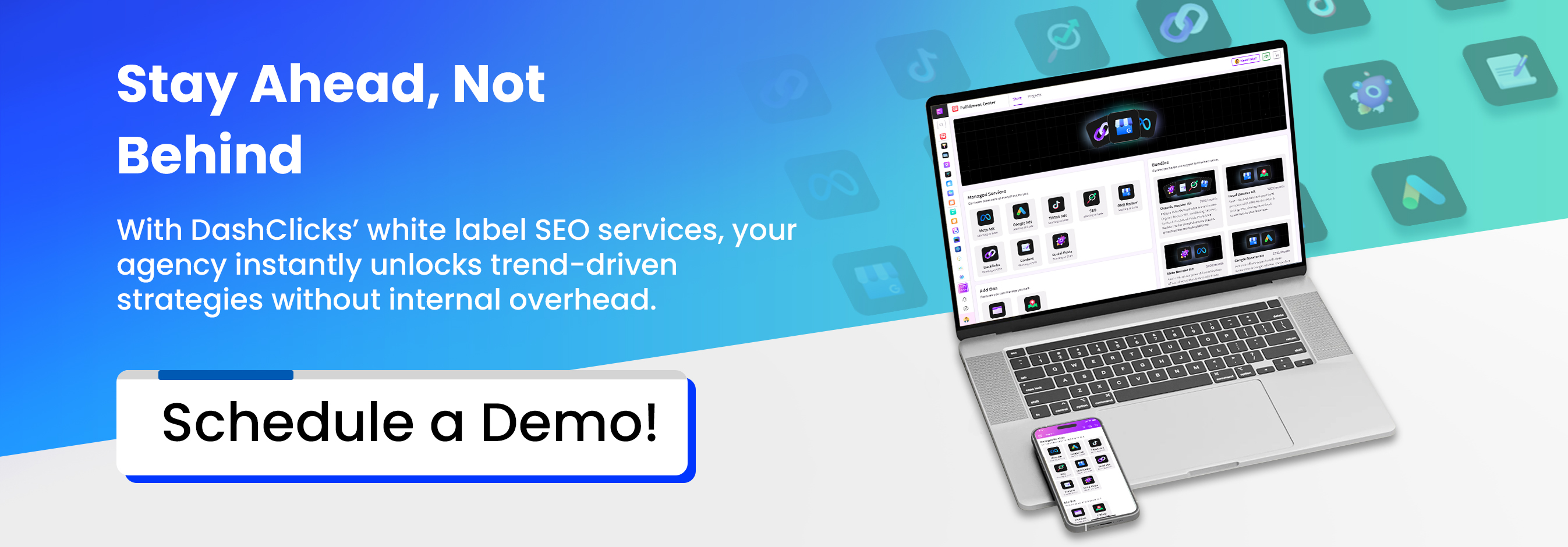

Common Pitfalls Agencies Face When Choosing a White Label PPC Partner
PPC advertising is unforgiving territory where every dollar matters. When global digital ad spend reached $667 billion in 2023, with PPC accounting for over 40% of total spend according to Statista, clients began expecting sophisticated handling of their investment. One poorly optimized campaign can instantly erode trust and destroy margins that took months to build.
Many agencies turn to white label PPC partners to scale operations and access specialized expertise. However, choosing the wrong partner can be catastrophic. Unlike other marketing services where mistakes unfold over weeks, PPC failures are immediate and measurable. Your clients see the results in real-time through their ad platform dashboards.
This guide reveals the specific pitfalls that plague agencies when selecting white label PPC services, going beyond generic outsourcing risks to address the unique challenges of pay-per-click advertising partnerships.
Pitfall 1: Choosing Based on Cost Instead of Value
The most dangerous trap agencies fall into is selecting the cheapest white label PPC agency available. These budget providers typically rely on cookie-cutter campaign setups and neglect the ongoing optimization that PPC demands.
Successful PPC campaigns require constant attention. Bid adjustments, keyword refinement, ad copy testing, and audience targeting need regular updates based on performance data. Cost-cutting partners skip these crucial optimizations to maintain their low prices.
Consider this reality: saving $500 on monthly management fees can easily result in thousands of dollars in wasted ad spend. Poor keyword targeting, ineffective ad copy, and suboptimal bidding strategies drain budgets faster than you can imagine.
As Brad Geddes, Co-Founder of AdAlysis, puts it: "In PPC, you don't save money by underpaying your strategist — you burn it twice as fast in wasted ad spend."
The math is simple. A 20% improvement in campaign performance on a $10,000 monthly ad budget delivers $2,000 in additional value. A cheap partner who saves you $300 but reduces performance by 15% actually costs you $1,500 in lost results.
Pitfall 2: Lack of Niche or Industry Experience
PPC strategy varies dramatically across industries. A partner excelling in e-commerce campaigns may struggle with local lead generation or B2B SaaS due to fundamental differences in customer journeys, conversion tracking, and success metrics.
Legal industry keywords can cost over $50 per click, according to WordStream's 2024 data. Healthcare, insurance, and financial services face strict compliance requirements that inexperienced partners often overlook. E-commerce campaigns focus on ROAS and shopping feeds, while B2B companies prioritize lead quality and sales cycle alignment.
When agencies become the "test case" for a partner's first foray into their industry, the learning curve comes at the client's expense. An agency specializing in dental practices needs a white label PPC partner who understands patient acquisition costs, local search behavior, and dental-specific compliance issues.

Pitfall 3: Poor Transparency in Budget Allocation
Some white label PPC partners obscure how they allocate client budgets between actual ad spend and management fees. This lack of transparency becomes problematic when clients demand detailed breakdowns of their investment.
Hidden markups on ad spend, bundled fees that combine multiple services, or unclear reporting on where dollars actually go create trust issues. In PPC, clients can log directly into Google Ads or Facebook Ads Manager to see their spending. If your partner's numbers don't align with platform data, you'll face difficult conversations with clients.
Kirk Williams from ZATO Marketing emphasizes: "Agencies live or die on transparency. Clients can log into Google Ads anytime. If your partner isn't aligned, it will come back to bite you."
Transparent partners provide clear breakdowns showing exactly how much goes toward ad spend versus management fees, platform costs, and any additional charges.
Pitfall 4: Overreliance on Automation Without Strategy
Many PPC partners lean heavily on Google's automated bidding and Smart Campaigns to reduce manual work. While automation tools are powerful, they require strategic oversight to deliver optimal results.
Automated bidding strategies need proper conversion tracking setup, historical data for machine learning, and ongoing monitoring to prevent budget waste. Smart Shopping campaigns can perform well but may lack the granular control needed for competitive industries.
According to Hanapin Marketing's 2023 survey, 32% of marketers cite "lack of strategic oversight with automation" as their top PPC concern. Clients expect strategic differentiation, not a "set-and-forget" approach that any competitor can replicate.
One agency reported a 35% drop in ROAS after switching to Smart Shopping campaigns without proper oversight. The automated system is optimized for volume rather than profitable conversions, leading to budget waste on low-value traffic.
Pitfall 5: Weak Communication and Reporting Cadence
PPC performance fluctuates daily based on competition, seasonality, and market conditions. Slow or generic reporting fails to address the dynamic nature of paid advertising and undermines client confidence.
Some partners send monthly spreadsheet reports without actionable insights or context for performance changes. This approach ignores the fact that PPC campaigns may need immediate adjustments when performance drops or opportunities arise.
According to Search Engine Journal's 2023 research, 62% of clients rank "transparent reporting" as the #1 factor in agency retention. Agencies need partners who provide white-labeled dashboards, proactive communication about campaign changes, and clear explanations for performance variations.
Effective partners establish crisis management protocols for account suspensions, policy violations, or sudden performance drops that require immediate attention.
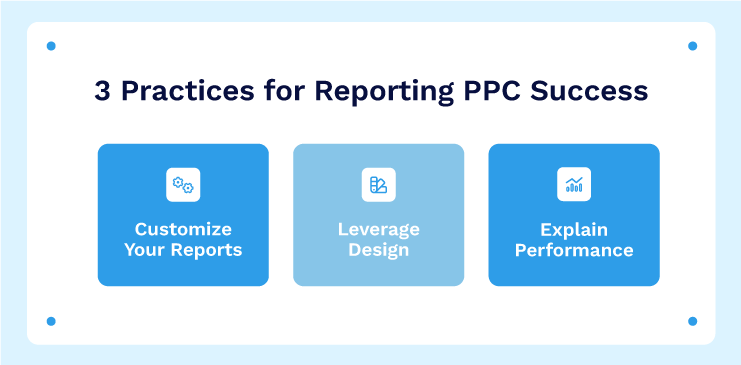
Image Source: AdClicks
Further Reading: PPC Reporting Strategies: 11 Things You Should Include in a PPC Report
Pitfall 6: One-Size-Fits-All Campaign Structures
Lazy PPC partners reuse identical campaign structures across all clients regardless of industry, goals, or market conditions. This approach leads to poor Quality Scores, higher costs per click, and reduced competitiveness.
Campaign structures should reflect the customer journey, geographic targeting requirements, and specific business objectives. A law firm needs different ad groups and keywords than an e-commerce store, even if both target local customers.
Generic approaches often use broad keyword groups, templated ad copy, and rigid bidding structures that don't account for client-specific factors. This results in irrelevant traffic, wasted budget, and missed opportunities for better-targeted messaging.
Pitfall 7: Compliance and Policy Blind Spots
Regulated industries like finance, healthcare, legal services, and housing face strict advertising policies across all major platforms. An inexperienced partner who doesn't understand these requirements can trigger account suspensions or policy violations.
Google blocked 5.5 billion ads in 2023 for policy violations, according to its Ads Transparency Report. Account suspensions not only halt advertising efforts but can also impact organic search rankings and overall online presence.
Financial services ads must comply with truth-in-lending requirements. Healthcare advertisements need specific disclaimers and cannot make certain medical claims. Real estate ads face fair housing compliance issues.
Agencies working with regulated clients must verify that their white label PPC agency has specific experience navigating industry policies and compliance requirements.
Pitfall 8: Lack of Agility in Scaling Campaigns
PPC campaigns often need rapid scaling during promotions, product launches, or seasonal opportunities. Some partners struggle with sudden budget increases or multi-platform expansion requirements.
Successful scaling requires experience with increased competition at higher spend levels, budget pacing across multiple campaigns, and integration between Google Ads, Facebook Ads, LinkedIn, and other platforms.
Frederick Vallaeys, Co-Founder of Optmyzr, notes: "In PPC, velocity matters. If your partner can't scale campaigns in real time, you're playing catch-up while competitors capture market opportunities."
Agencies miss revenue opportunities when their white label PPC partner cannot quickly expand successful campaigns or launch complementary advertising efforts across multiple channels.
Pitfall 9: Misaligned Success Metrics
Some white label PPC partners focus on vanity metrics like clicks, impressions, and click-through rates instead of business outcomes like return on ad spend (ROAS), cost per lead (CPL), or customer acquisition cost (CAC).
Campaigns may appear successful based on engagement metrics while failing to generate profitable results for the client. This misalignment becomes obvious when clients compare advertising investment to actual revenue or lead generation.
According to Gartner's 2023 research, 76% of CMOs demand ROI-based reporting from agencies rather than traffic-focused metrics. Agencies risk client churn when they cannot connect PPC performance to business growth.
Melissa Mackey, Paid Search Consultant, explains: "If your PPC partner can't connect metrics to pipeline or sales, they're optimizing for themselves, not for you."
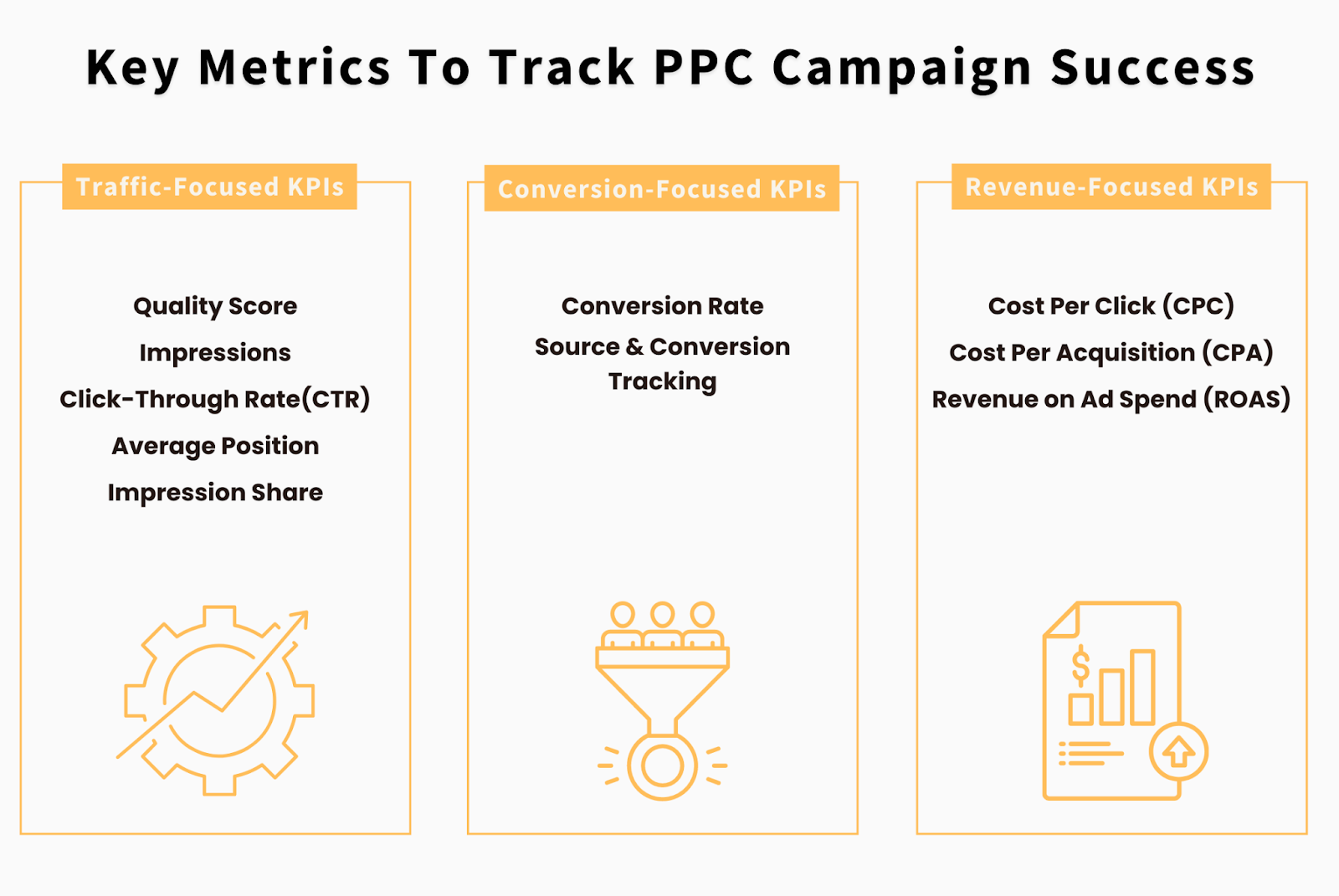
Pitfall 10: Lack of White-Labeling Quality
Professional white-labeling goes beyond removing a vendor's logo from reports. It requires seamless integration with agency branding, consistent communication protocols, and maintaining the illusion that all work originates from the agency.
Poor white labeling reveals the outsourcing arrangement to clients, which can undermine the agency's positioning as the expert and reduce perceived value. Clients may question why they're paying agency rates for outsourced work.
Quality white label PPC services include branded dashboards, consistent design elements, agency-specific language and terminology, and communication that reinforces the agency's expertise and relationship with the client.
Pitfall 11: Mistaking Surface-Level Case Studies for True PPC Expertise
Many vendors showcase impressive ROAS screenshots and performance highlights without providing context about campaign duration, industry factors, or budget levels. These cherry-picked examples can create unrealistic expectations.
According to HubSpot's 2024 research, 68% of agencies cite a lack of transparent reporting from white-label partners as a major client retention issue. Performance examples without context hide potential inconsistencies in account management quality.
Brad Geddes from AdAlysis advises: "Numbers without context are dangerous. Always demand to see both wins and failures across multiple accounts to understand a partner's true capabilities."
Agencies should request detailed case studies showing challenges faced, strategies implemented, and results achieved over extended periods rather than isolated success metrics.
Pitfall 12: Lack of International Targeting Competence
Global campaigns require an understanding of cultural nuances, local keyword research, currency considerations, and region-specific platform policies. Partners unprepared for international expansion create missed opportunities with global clients.
Multi-language campaigns need native speakers for ad copy creation and cultural adaptation beyond literal translation. Time zone management, local competition analysis, and region-specific bidding strategies require specialized expertise.
Agencies working with international clients or those planning global expansion need a white label PPC agency with proven multi-region campaign management experience.
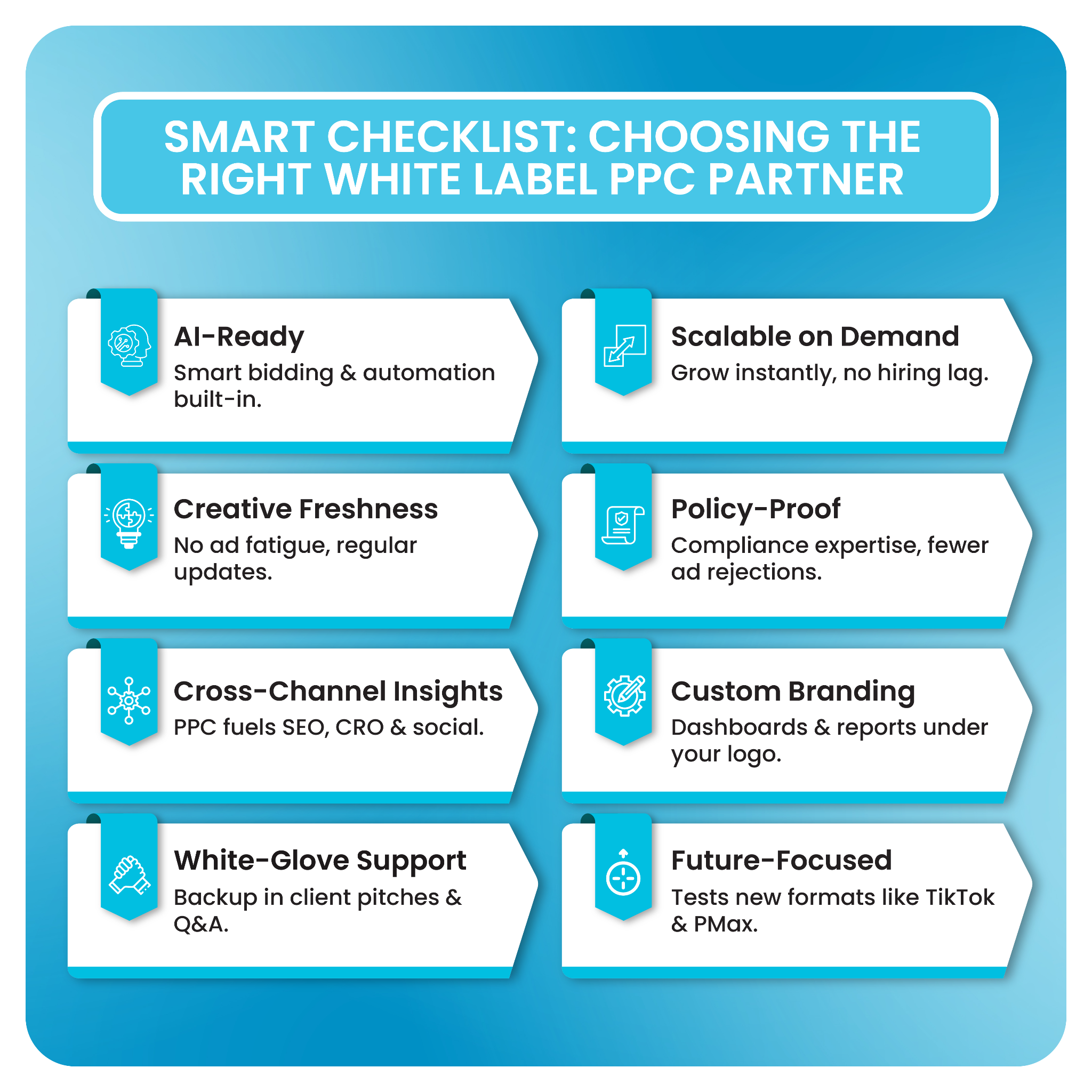
Future-Proofing Against PPC Partner Risks
The PPC landscape evolves faster than most digital marketing channels. Platform policy changes, new automation features, privacy regulations, and tracking limitations require partners who anticipate and adapt to industry shifts.
Key areas to evaluate when assessing future readiness include:
- Adaptability to Platform Changes: Partners must stay current with Google Ads, Facebook Ads, and emerging platform updates while maintaining campaign performance during transitions.
- Privacy and Tracking Solutions: iOS updates, cookie deprecation, and privacy regulations require partners skilled in server-side tracking, conversion modeling, and first-party data strategies.
- AI and Automation Management: Rather than blindly implementing automated features, effective partners guide automation with strategic oversight and performance monitoring.
- Regulated Industry Compliance: Partners should maintain current knowledge of advertising policies for sensitive verticals and proactive compliance protocols.
- Crisis Response Systems: Rapid response capabilities for account suspensions, policy violations, or sudden performance drops protect client relationships.
- Long-Term Risk Communication: Partners should proactively alert agencies about industry changes, potential compliance issues, and emerging competitive threats.
Frederick Vallaeys emphasizes: "A partner who only optimizes for today is already behind. The real value is in anticipating the next disruption before it hits."
How DashClicks Helps Agencies Avoid These Pitfalls?
DashClicks addresses these common white label PPC challenges through its comprehensive approach to digital marketing partnerships. Their platform provides transparent reporting with real-time dashboards that agencies can white-label for clients, ensuring complete visibility into campaign performance and budget allocation.
With years of experience across multiple industries, DashClicks brings specialized knowledge to regulated sectors like healthcare, legal, and finance while maintaining strict compliance standards. Their integrated approach combines PPC management with broader digital marketing services, allowing agencies to scale efficiently without compromising quality.
DashClicks maintains dedicated account managers who understand the urgency of PPC optimization and provide proactive communication about campaign changes, performance fluctuations, and optimization opportunities. This level of service ensures agencies never face the communication gaps that often damage client relationships in white label partnerships.
Making the Right Partnership Decision
Choosing a white label PPC partner represents more than a vendor selection—it's an investment in your agency's reputation and growth potential. The wrong choice wastes client budgets, damages relationships, and limits scalability. The right partner amplifies your expertise, protects your margins, and enables confident growth.
Use this comprehensive pitfall checklist during your evaluation process. Prioritize transparency, industry expertise, and communication quality over cost savings. Remember that in PPC advertising, the cheapest option often becomes the most expensive mistake.
Your clients trust you with their advertising investment. Choose a white label PPC partner who honors that trust with the same commitment to excellence you bring to your agency relationships.


No results found.
Please try different keywords.
Get Started with
DashClicks Today
Get found online, convert leads faster, generate more revenue, and improve your reputation with our all-in-one platform.
.svg)
Unlimited Sub-Accounts
.svg)
Unlimited Users
.svg)
All Apps
.svg)
All Features
.svg)
White-Labeled
.svg)
Active Community
.svg)
Mobile App
.svg)
Live Support
.svg)
100+ Tutorials
.svg)
Unlimited Sub-Accounts
.svg)
Unlimited Users
.svg)
All Apps
.svg)
All Features
.svg)
White-Labeled
.svg)
Active Community
.svg)
Mobile App
.svg)
Live Support
.svg)
100+ Tutorials
.svg)
Unlimited Sub-Accounts
.svg)
Unlimited Users
.svg)
All Apps
.svg)
All Features
.svg)
White-Labeled
.svg)
Active Community
.svg)
Mobile App
.svg)
Live Support
.svg)
100+ Tutorials



.svg)
.svg)
.svg)
.svg)
.svg)


